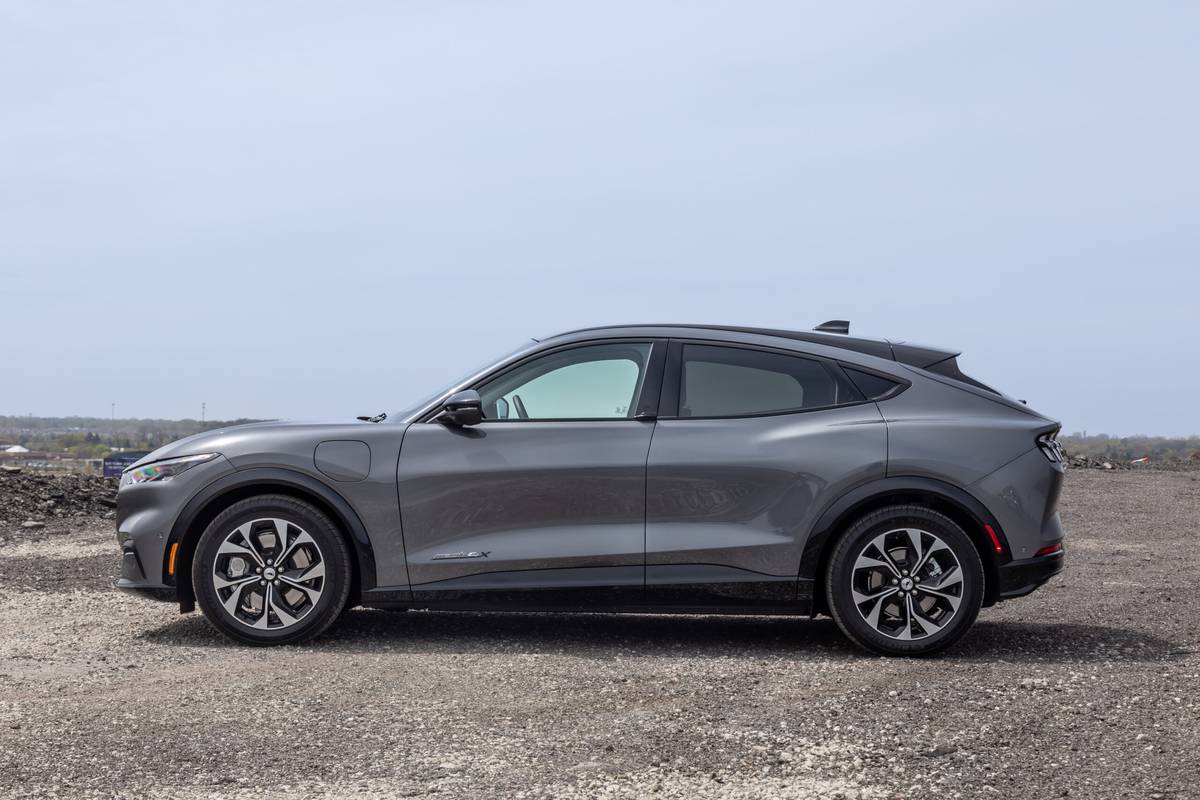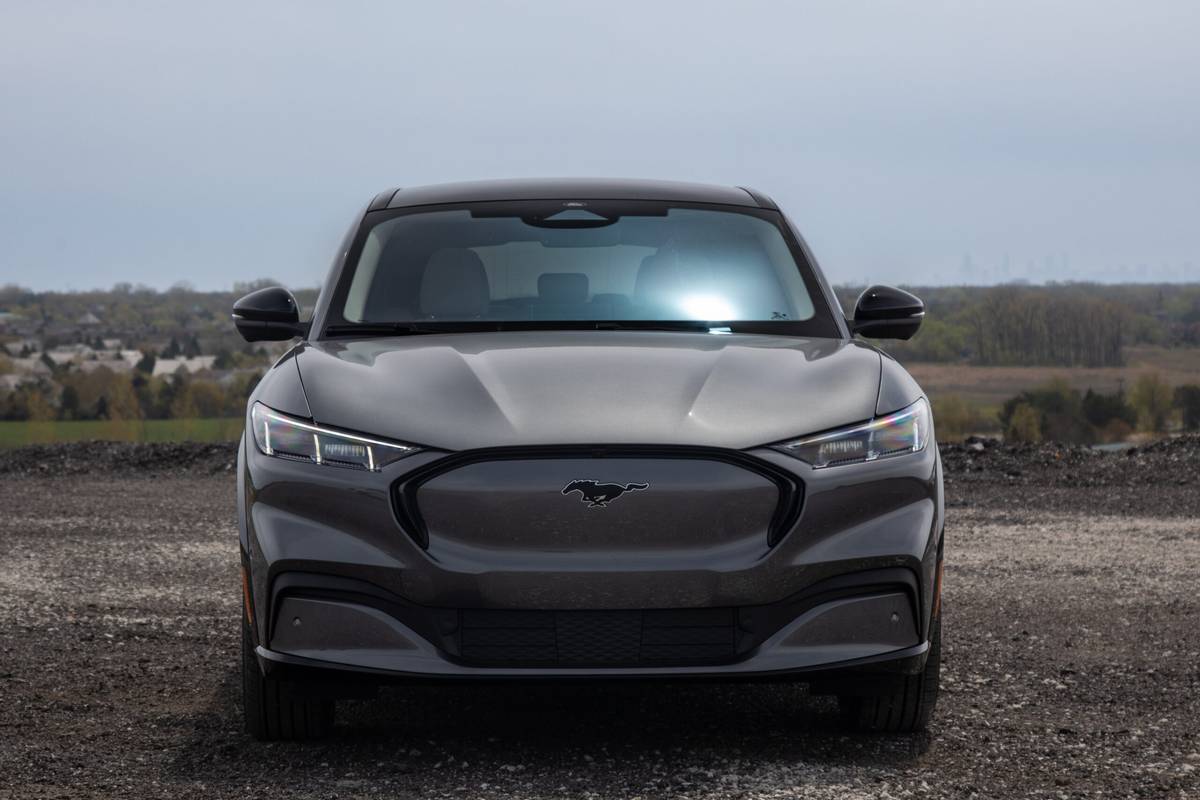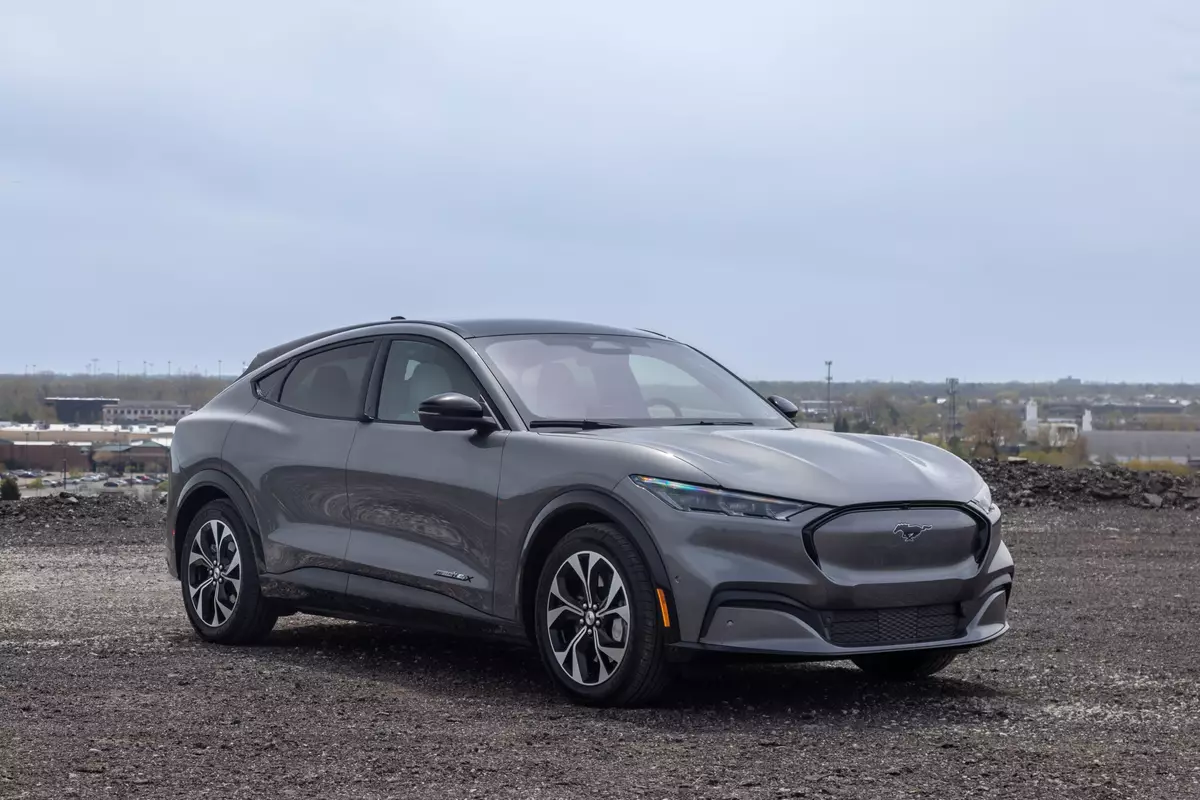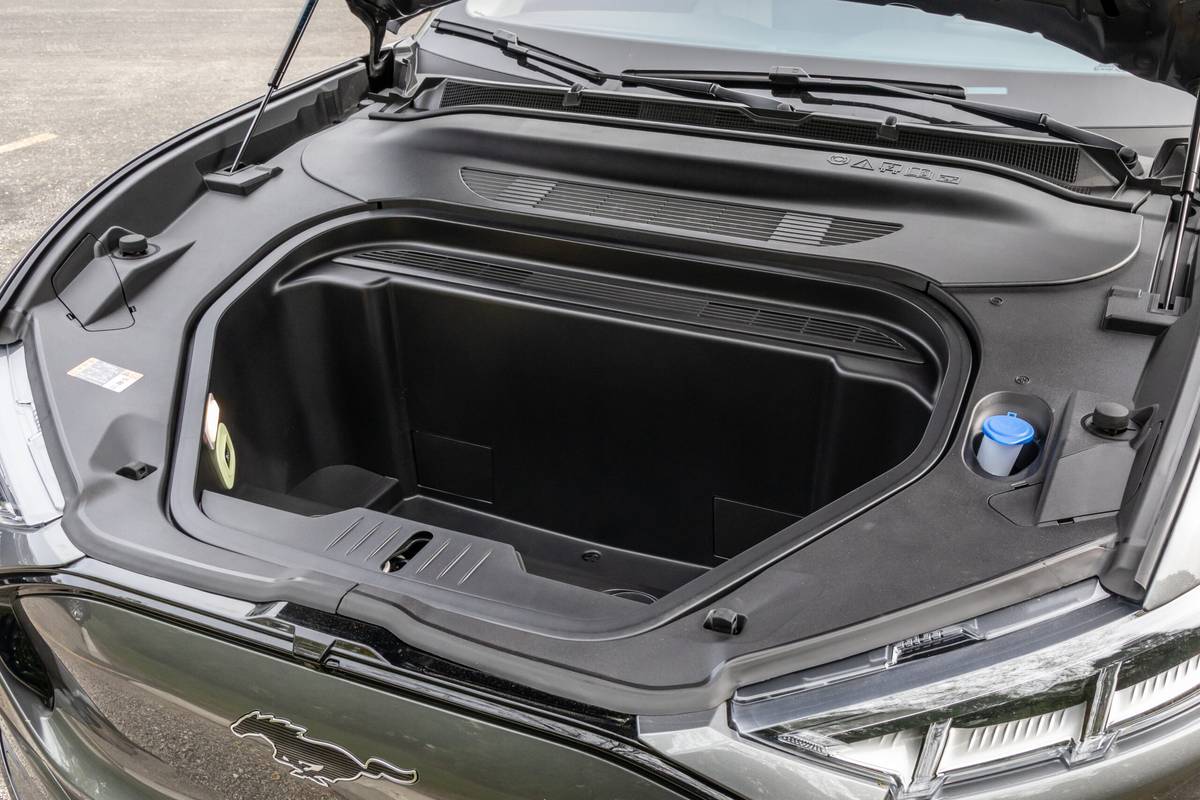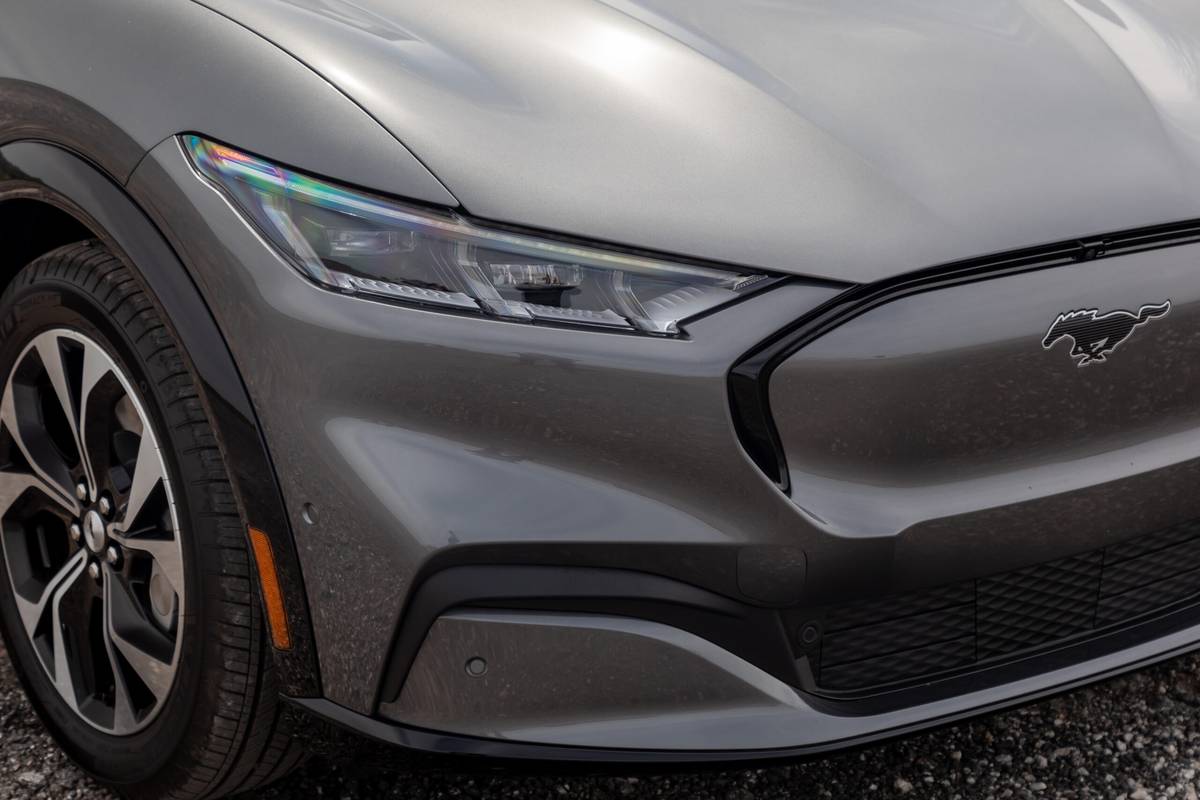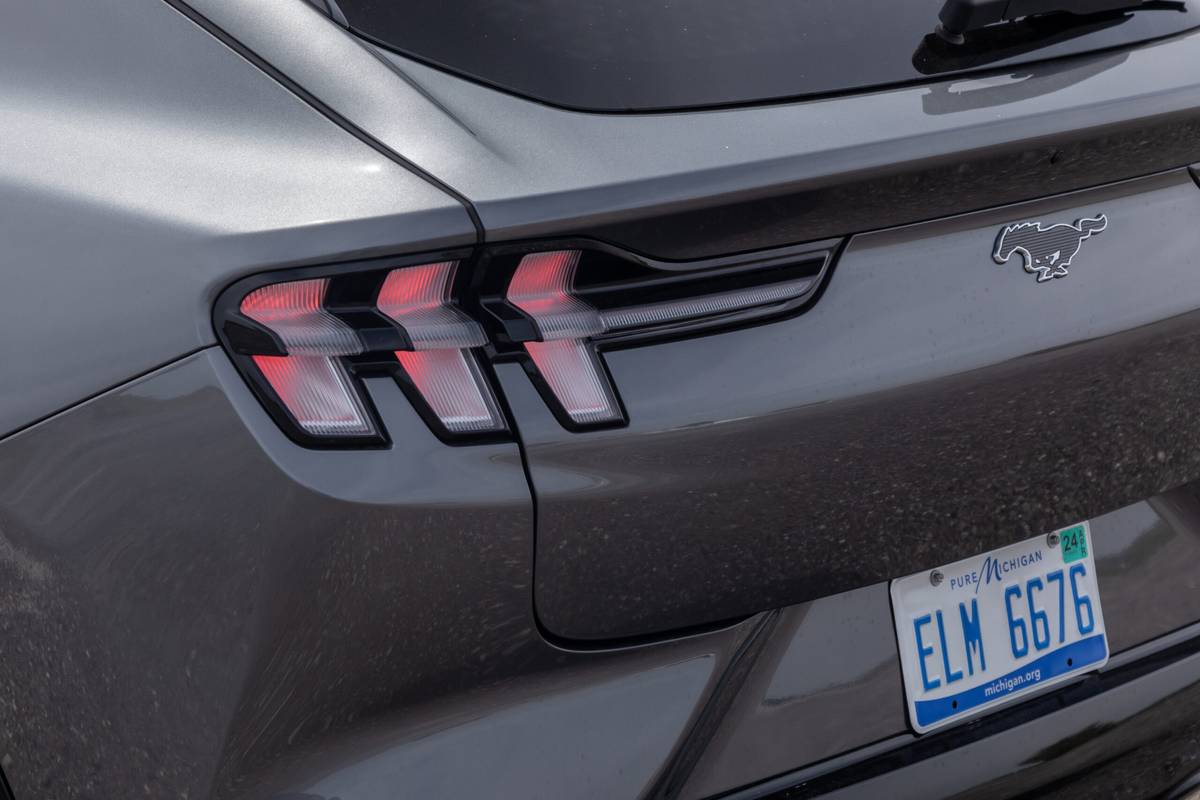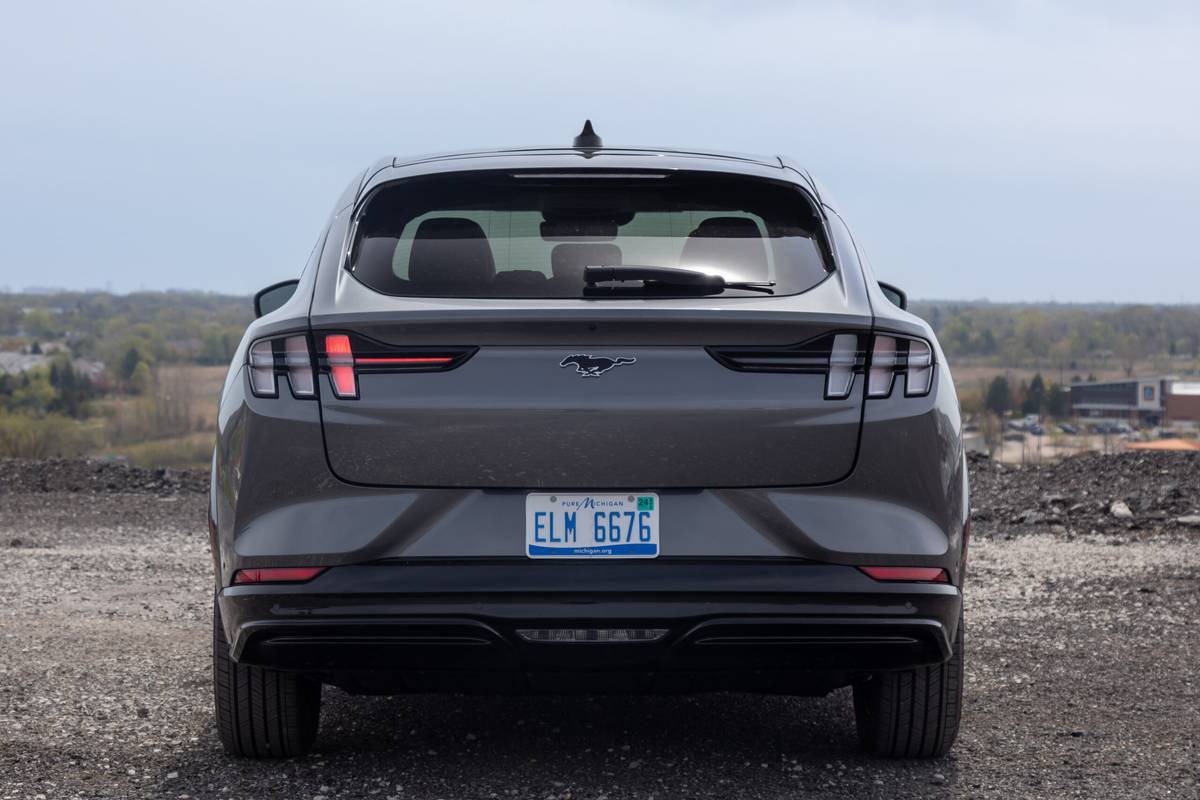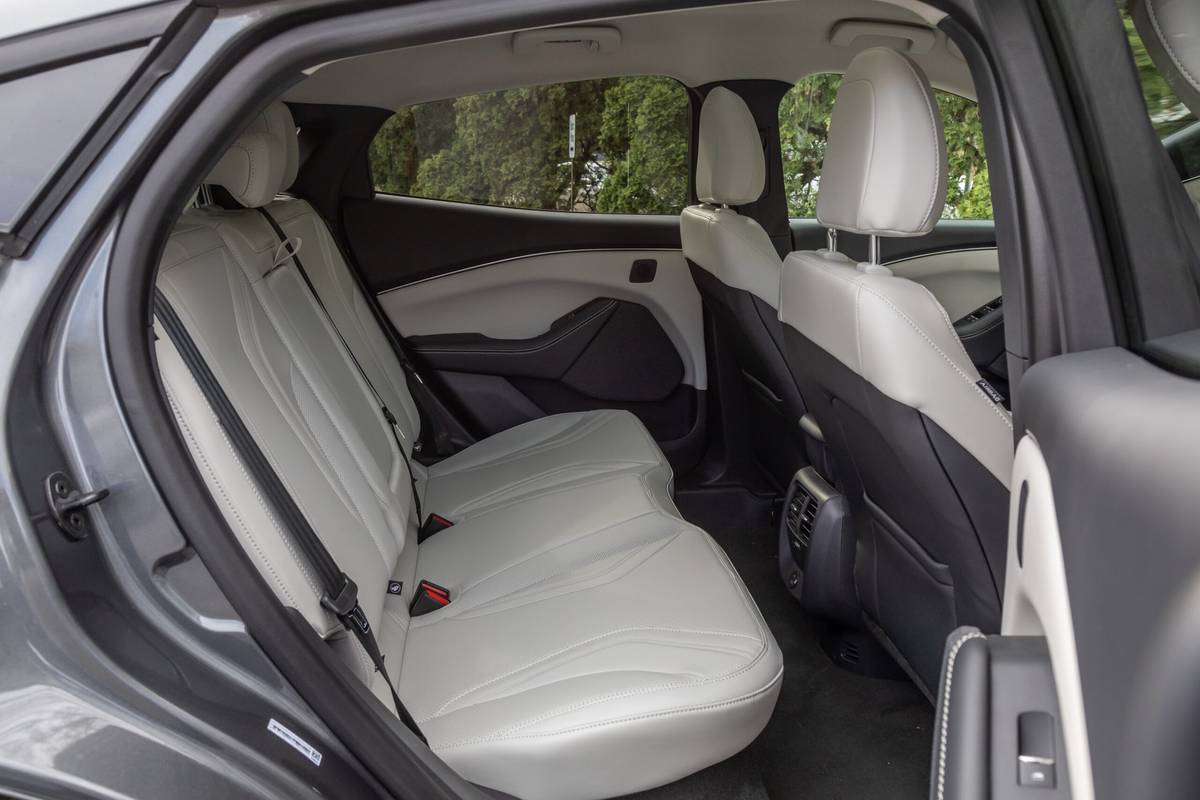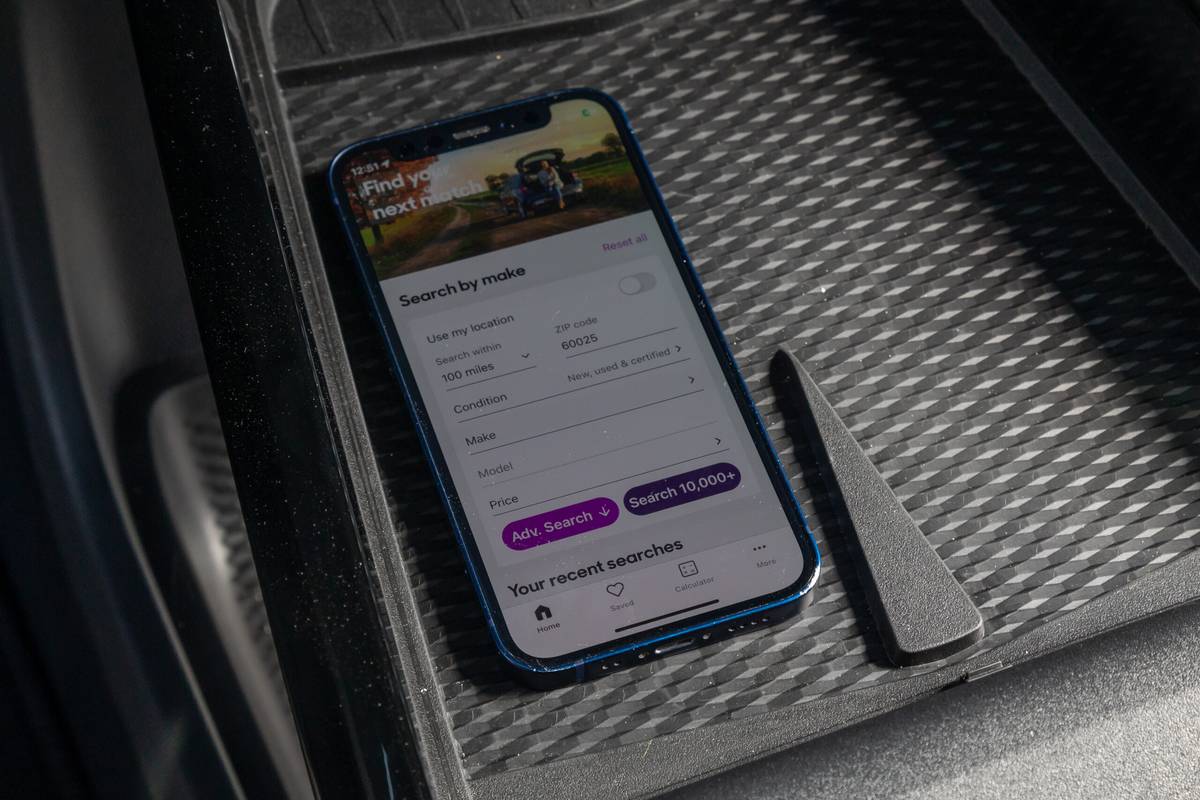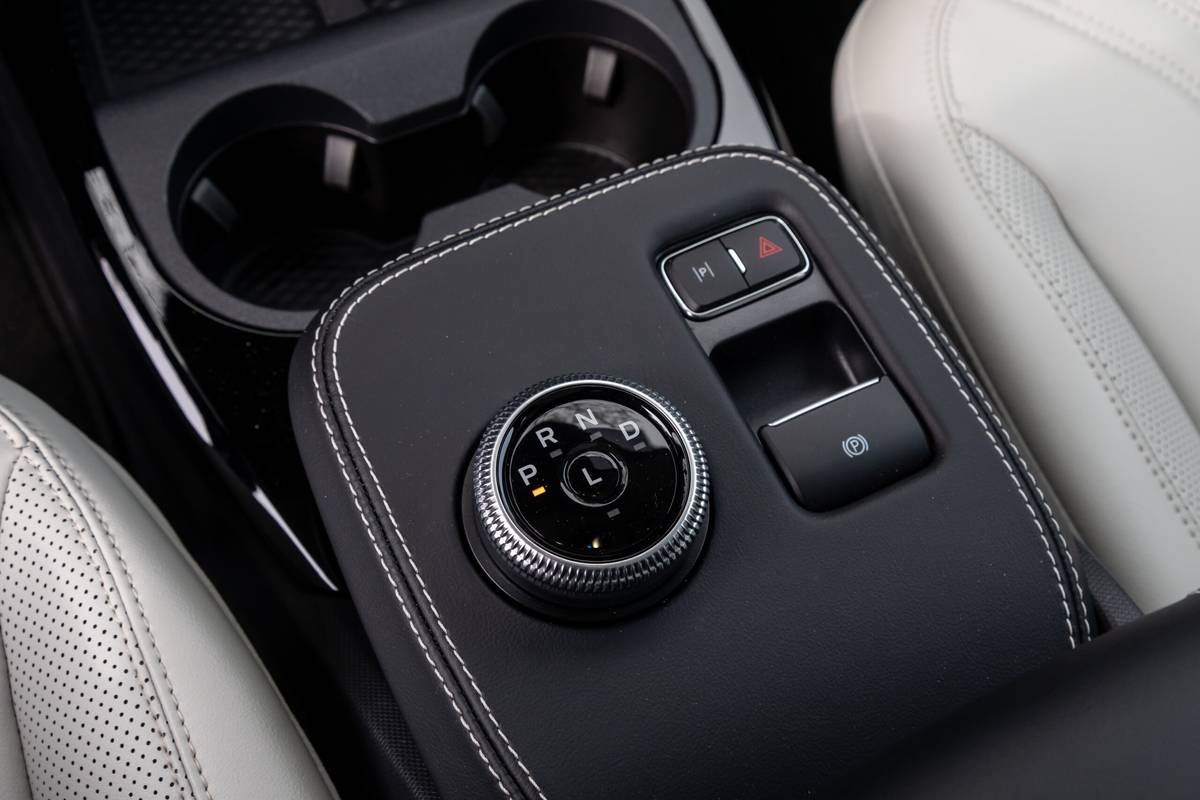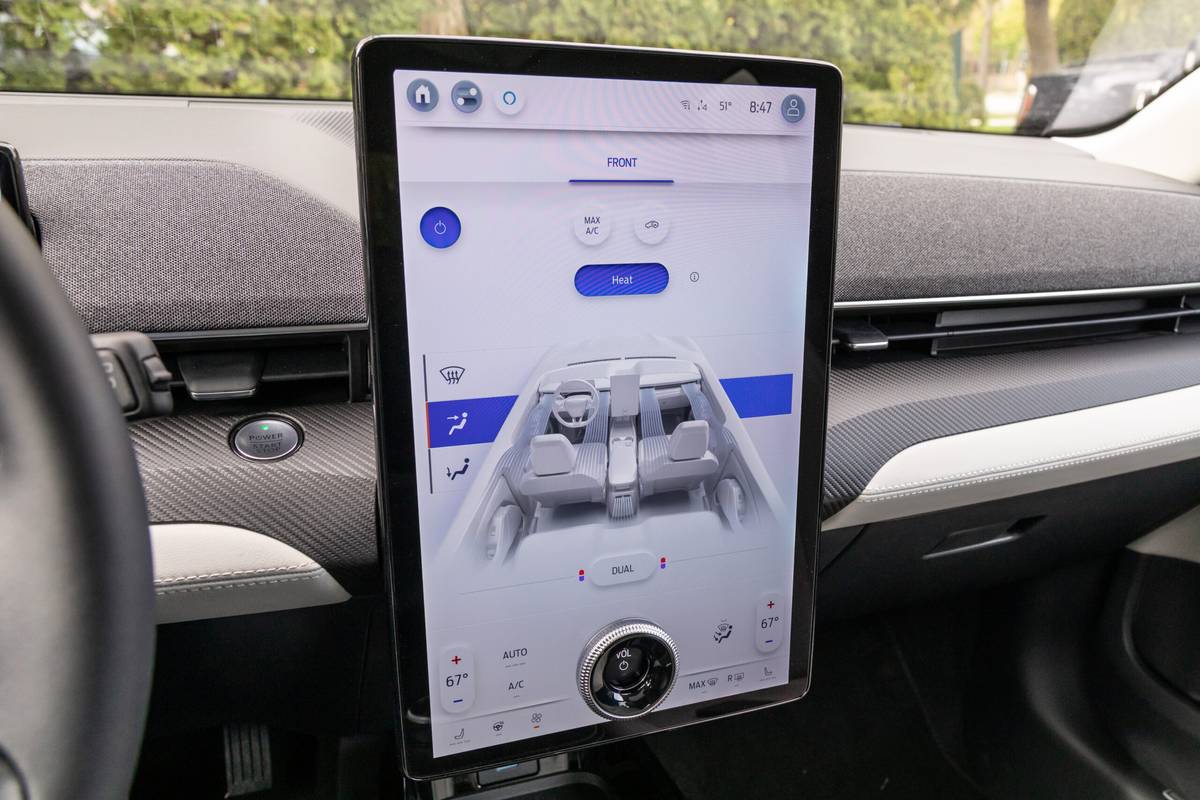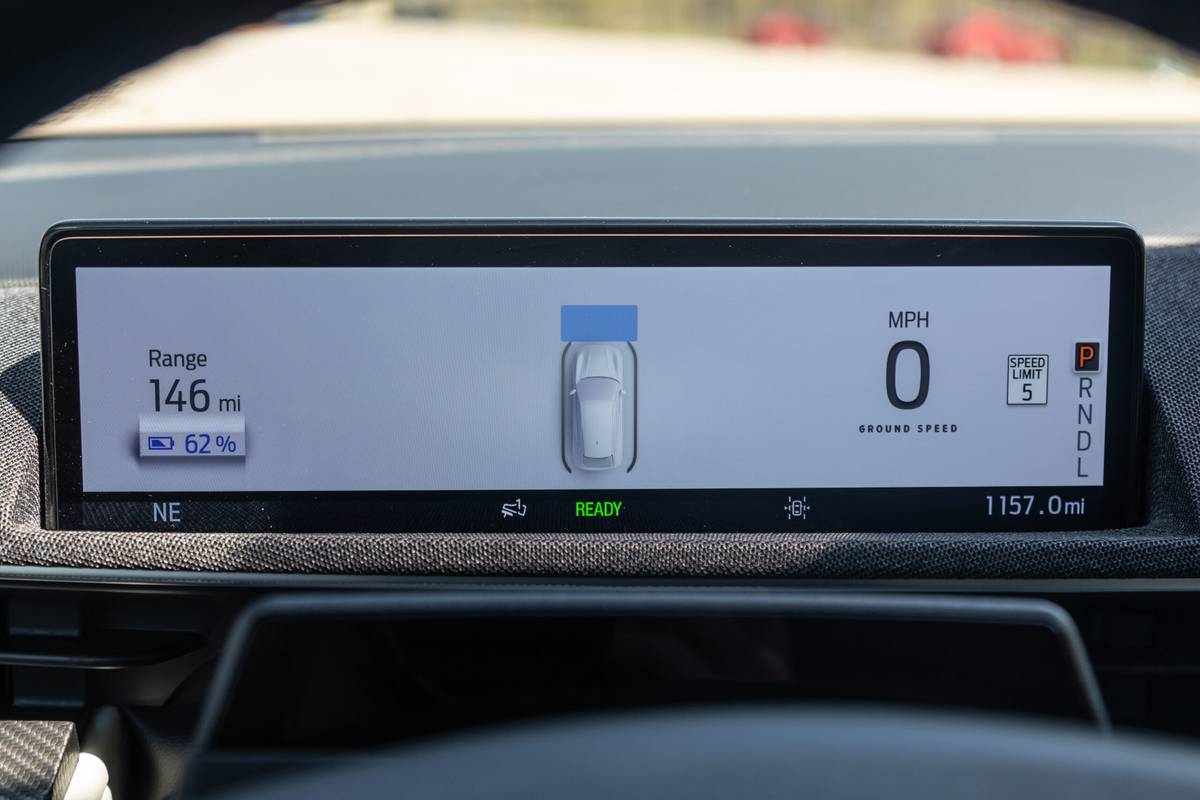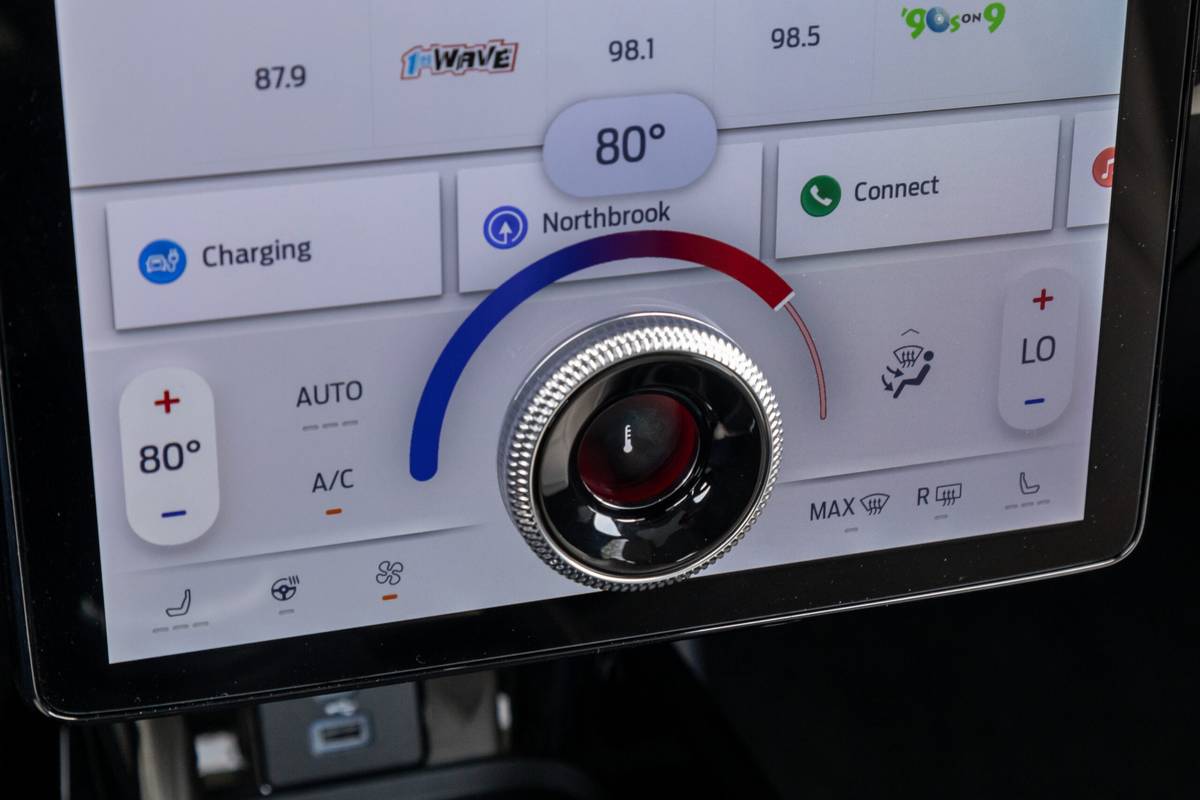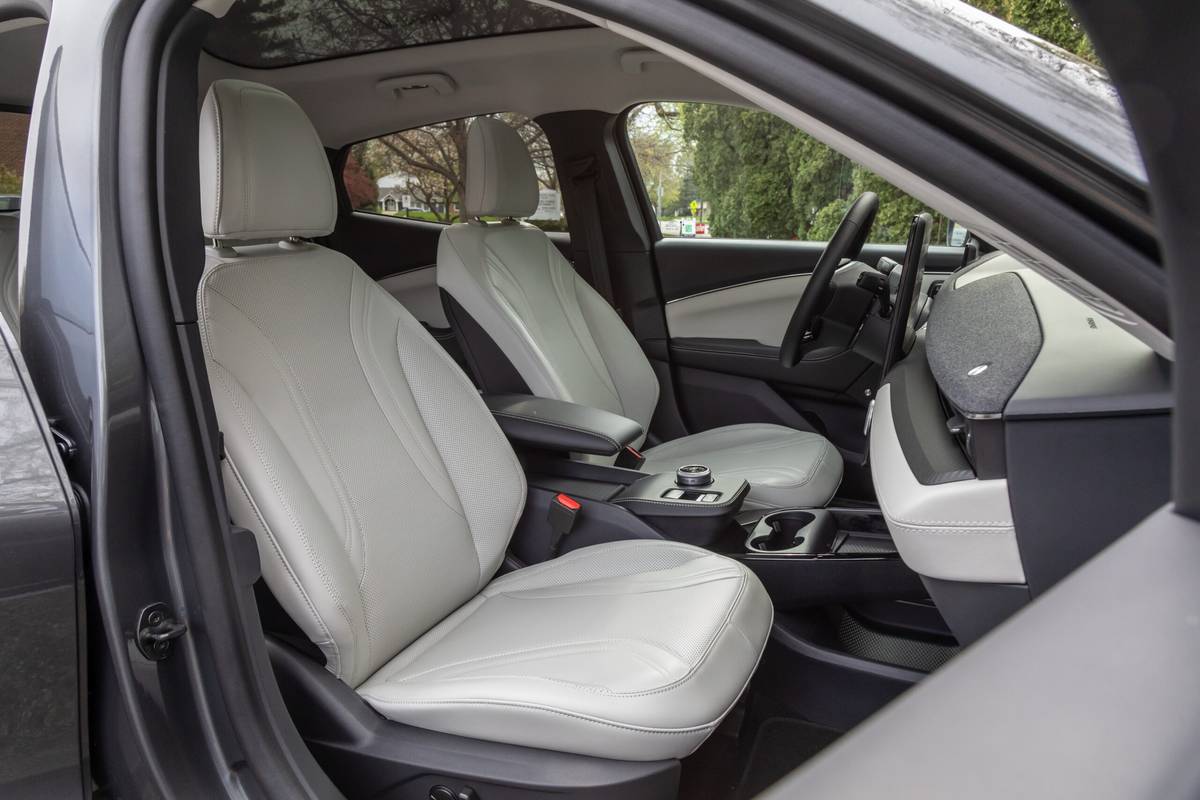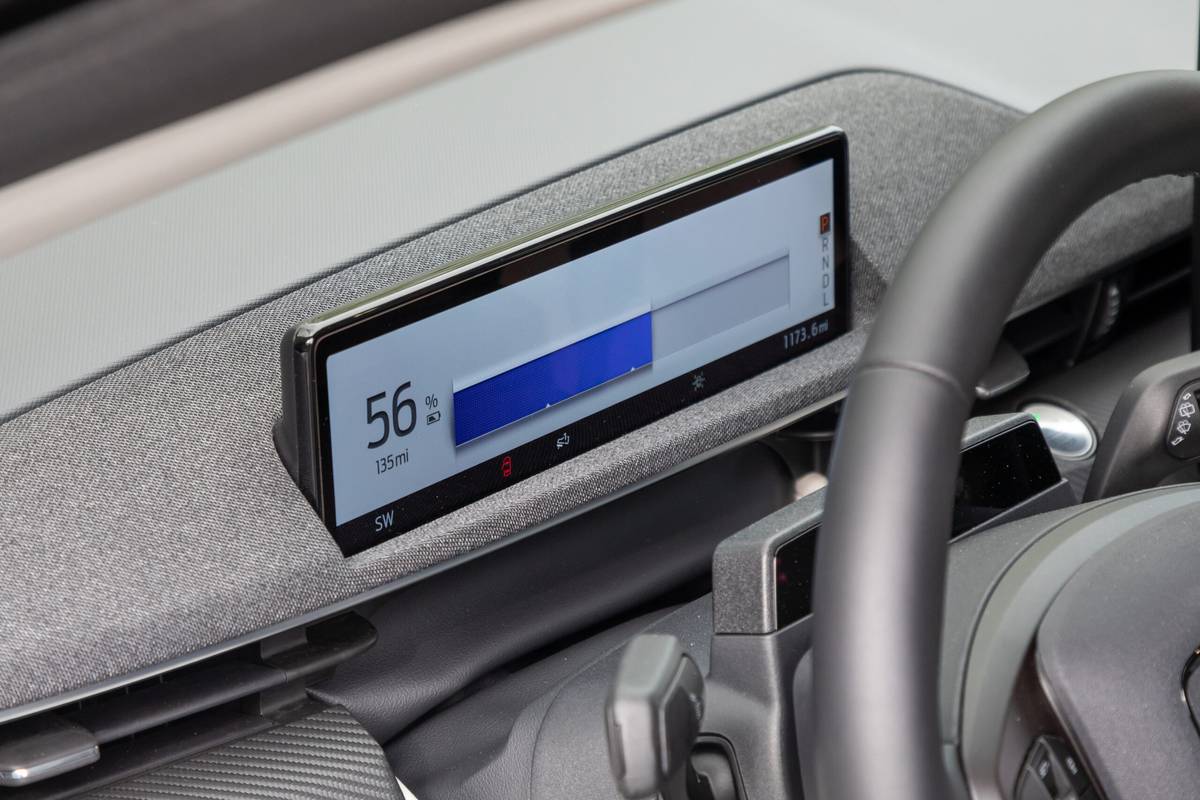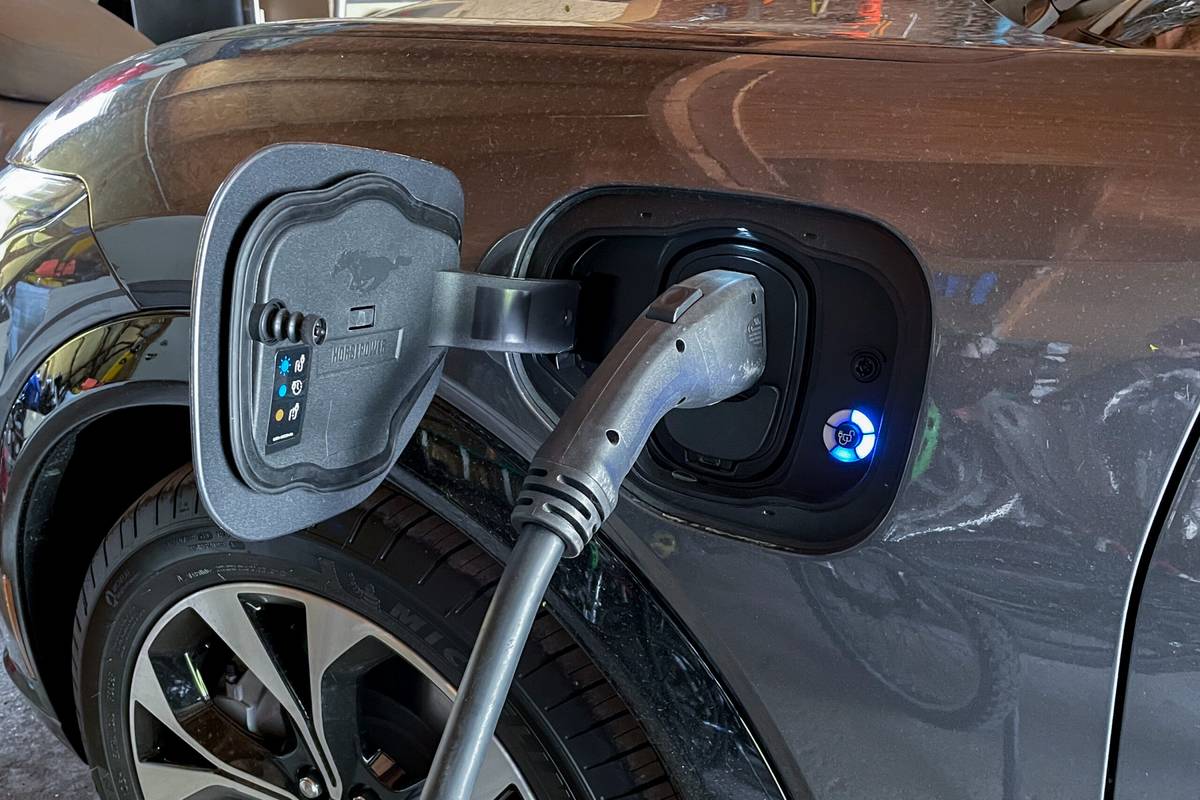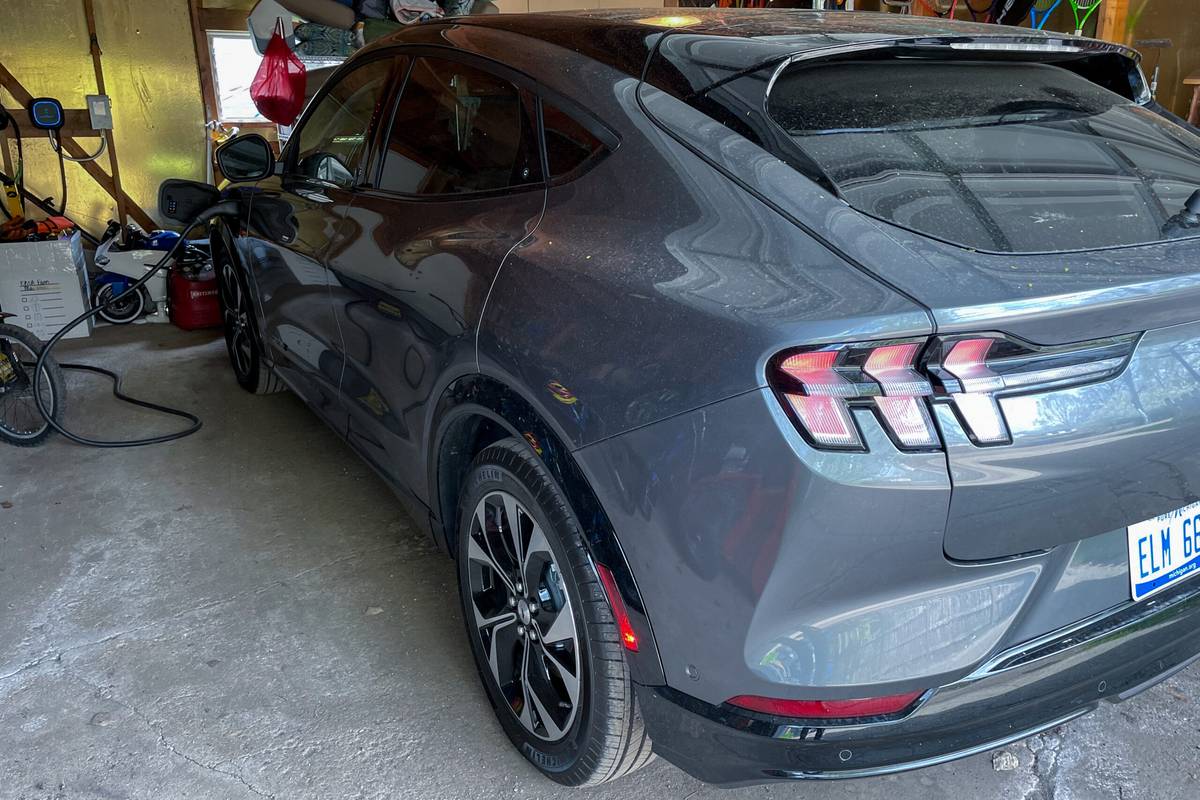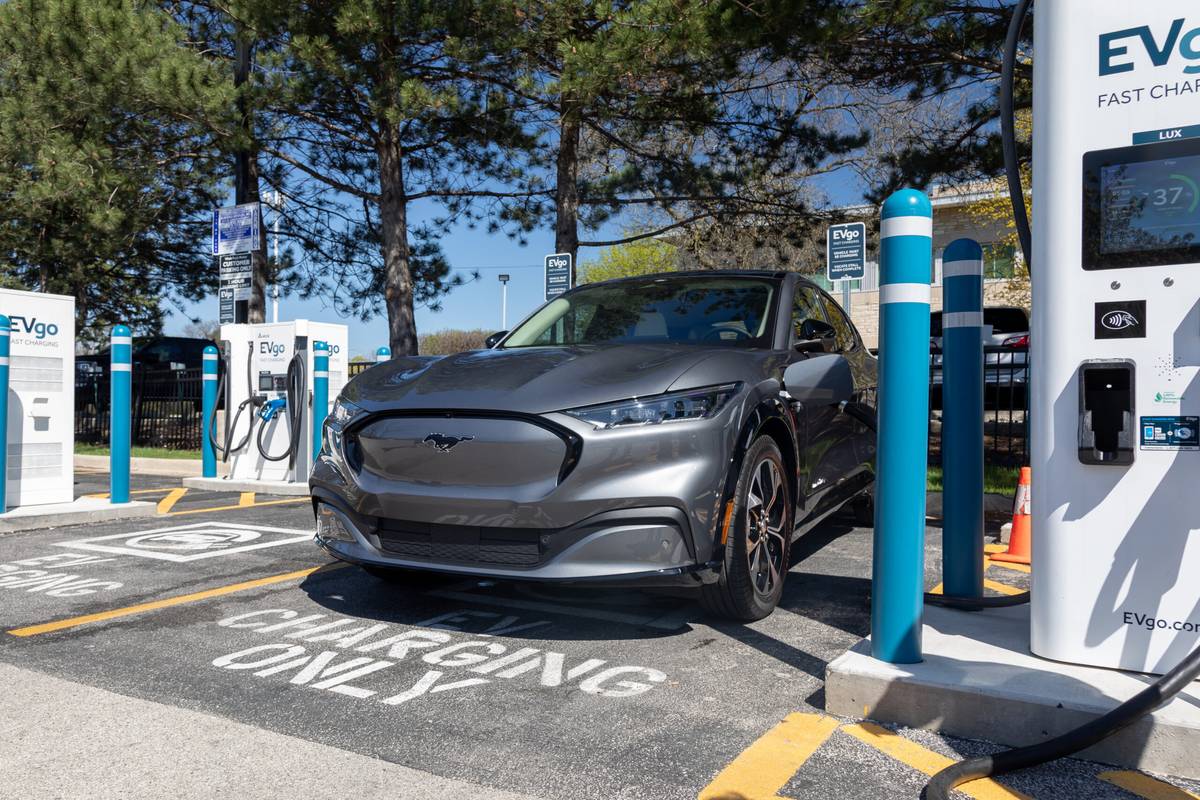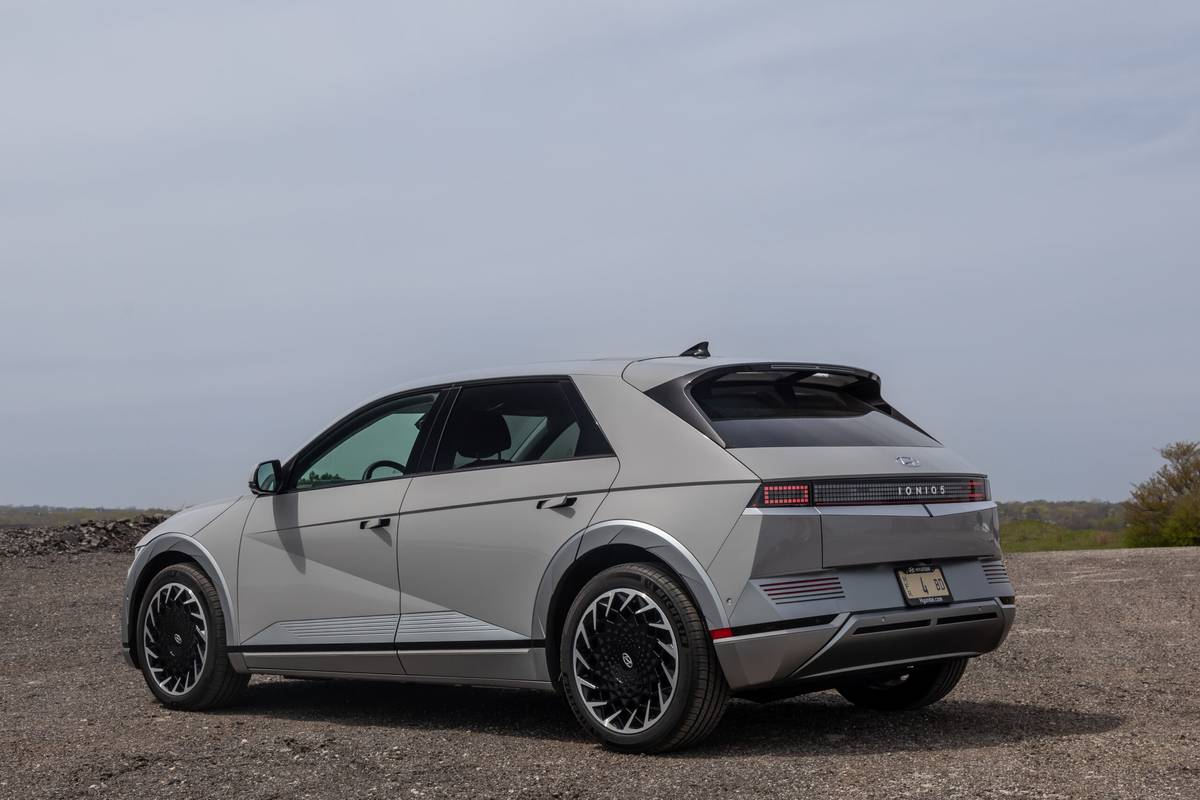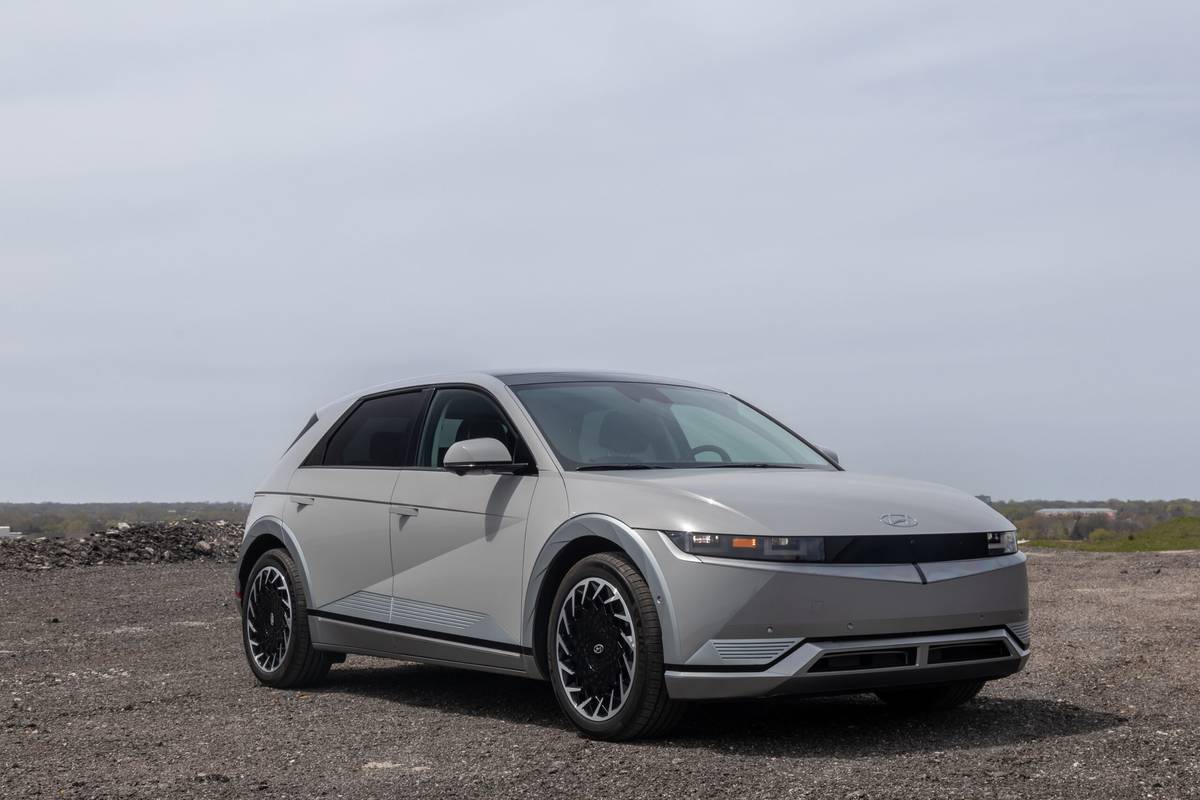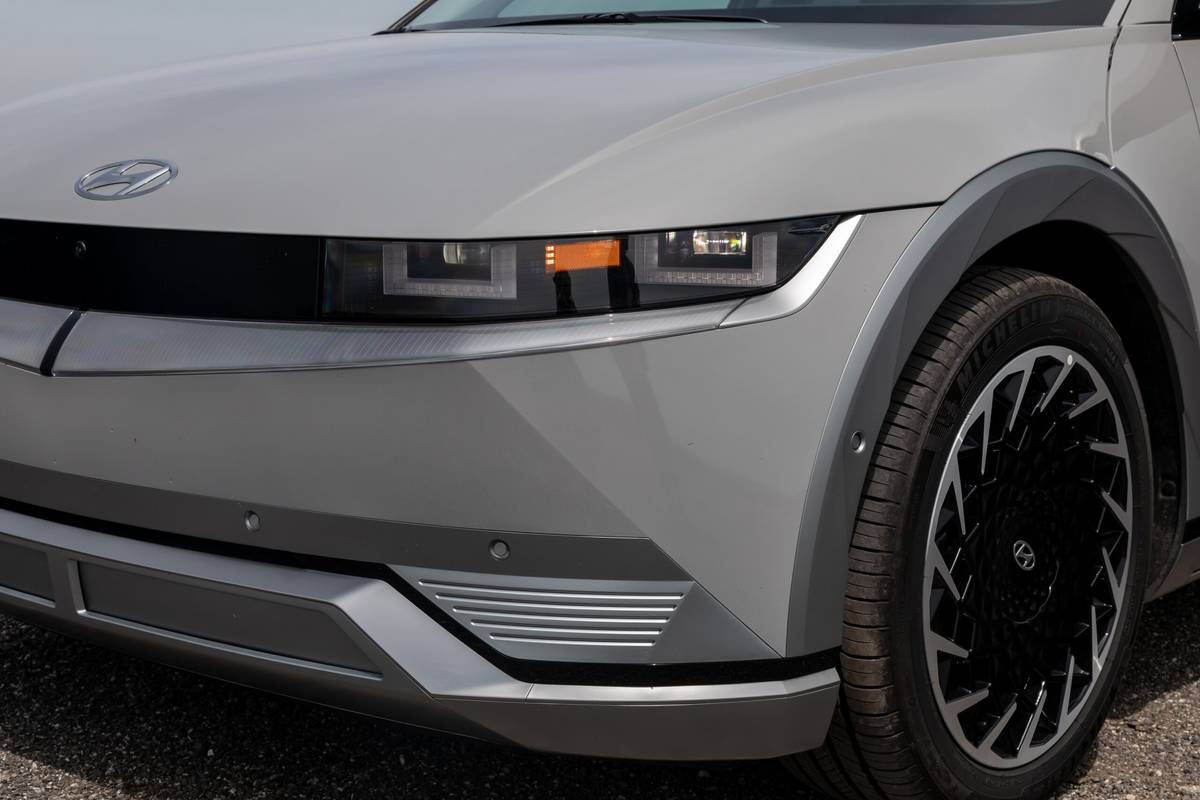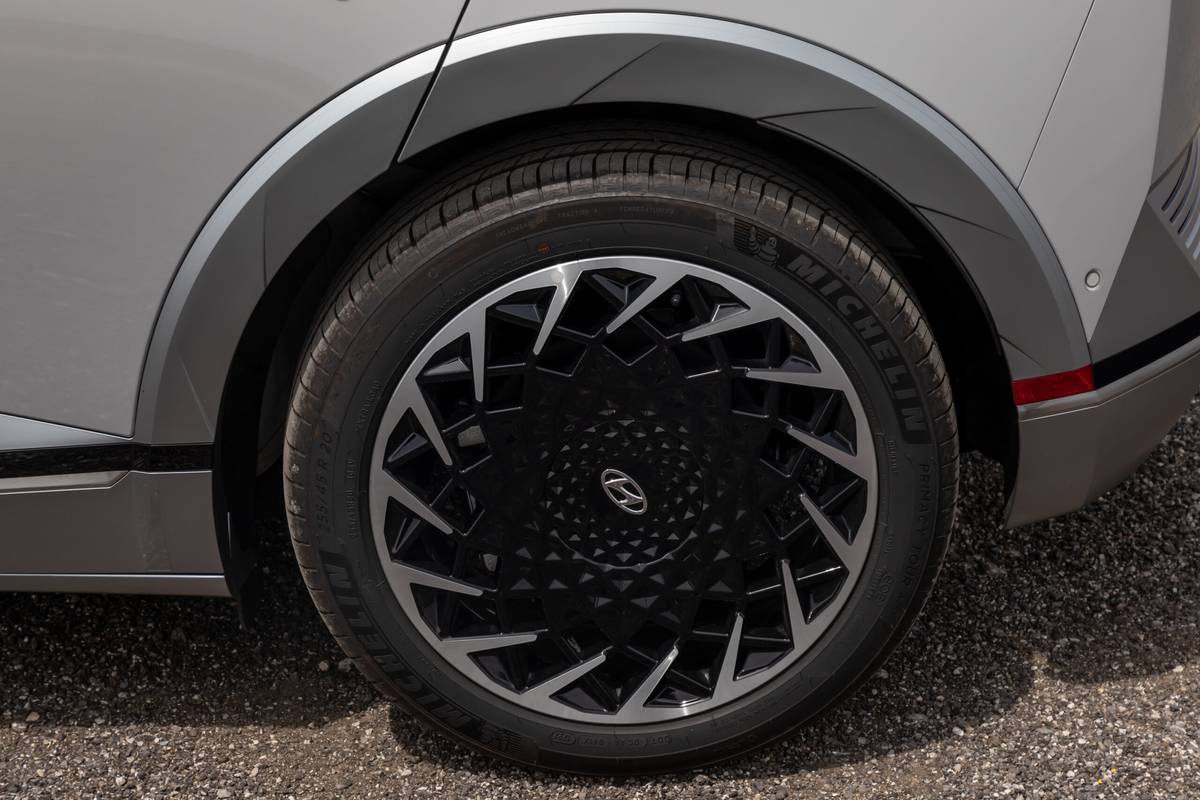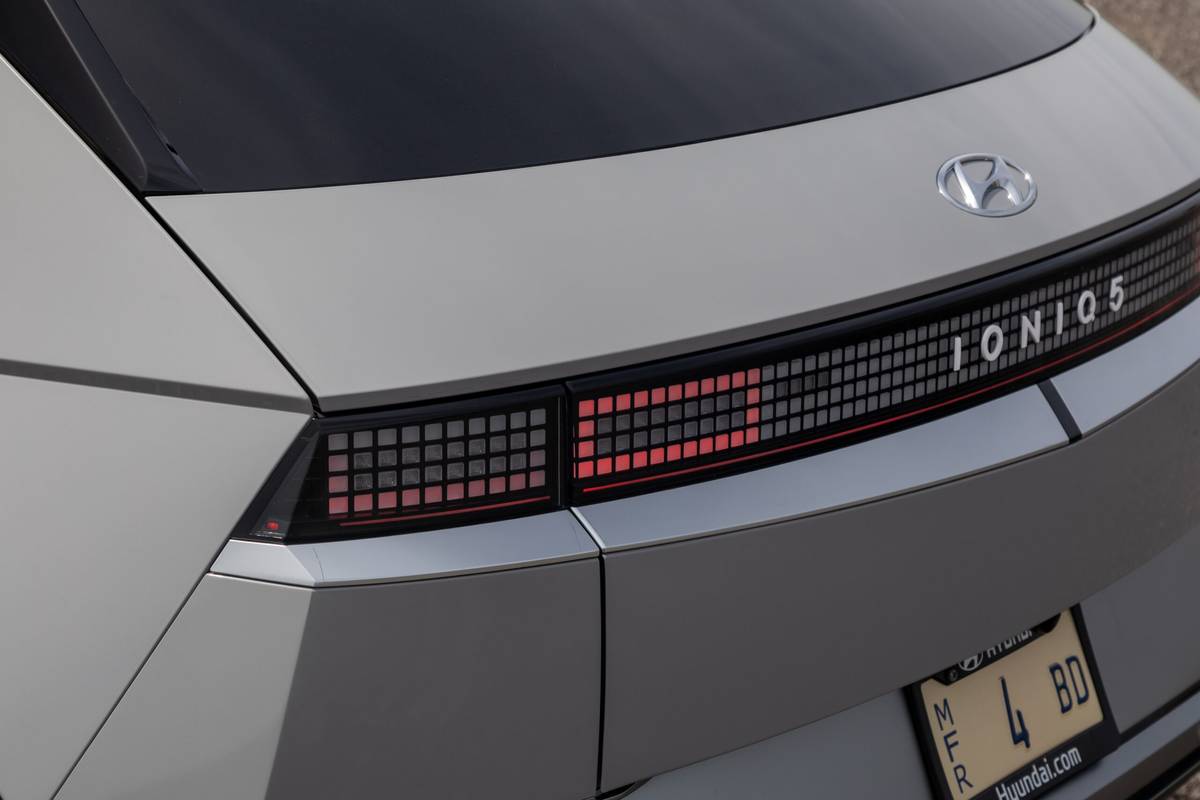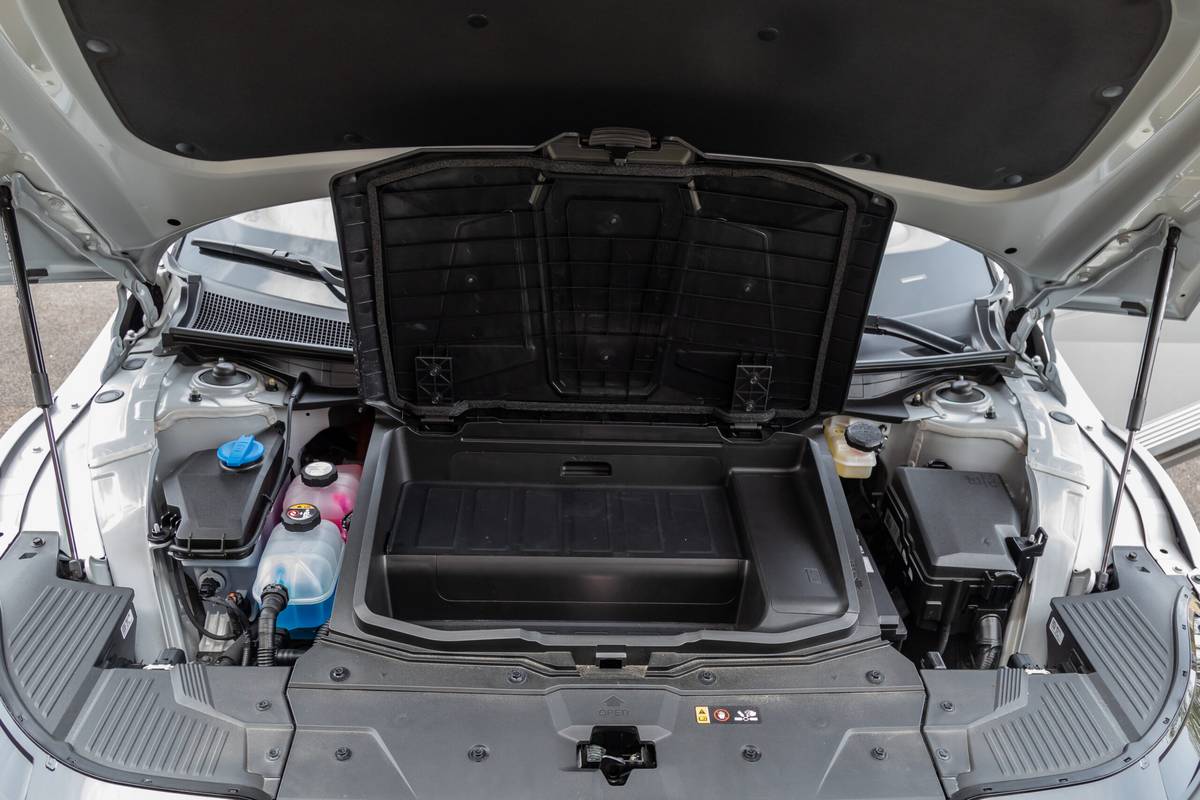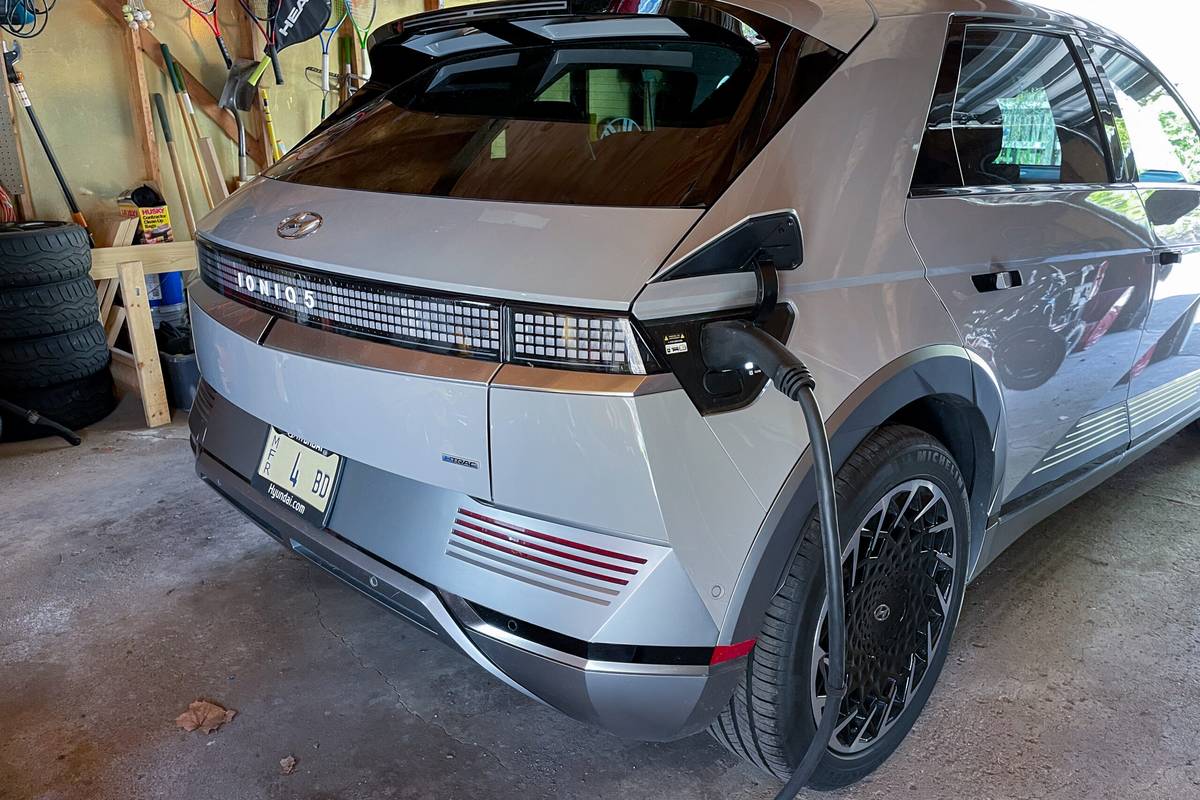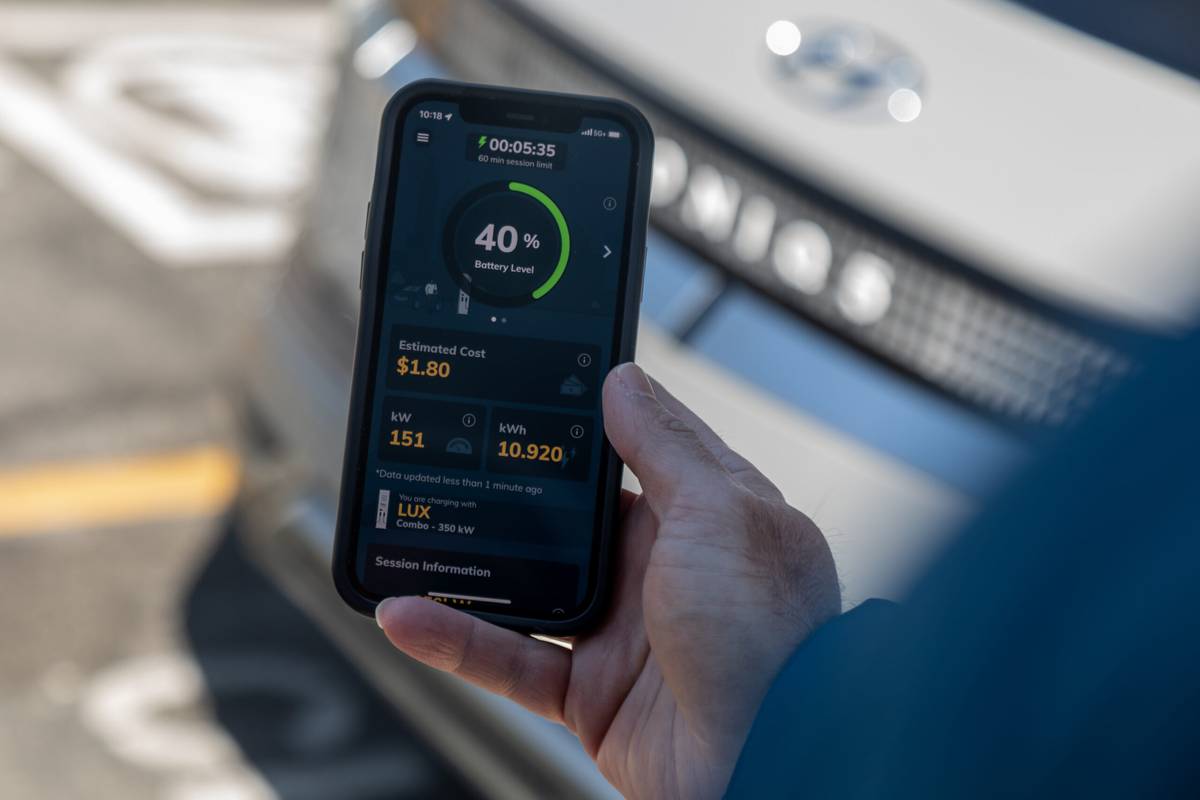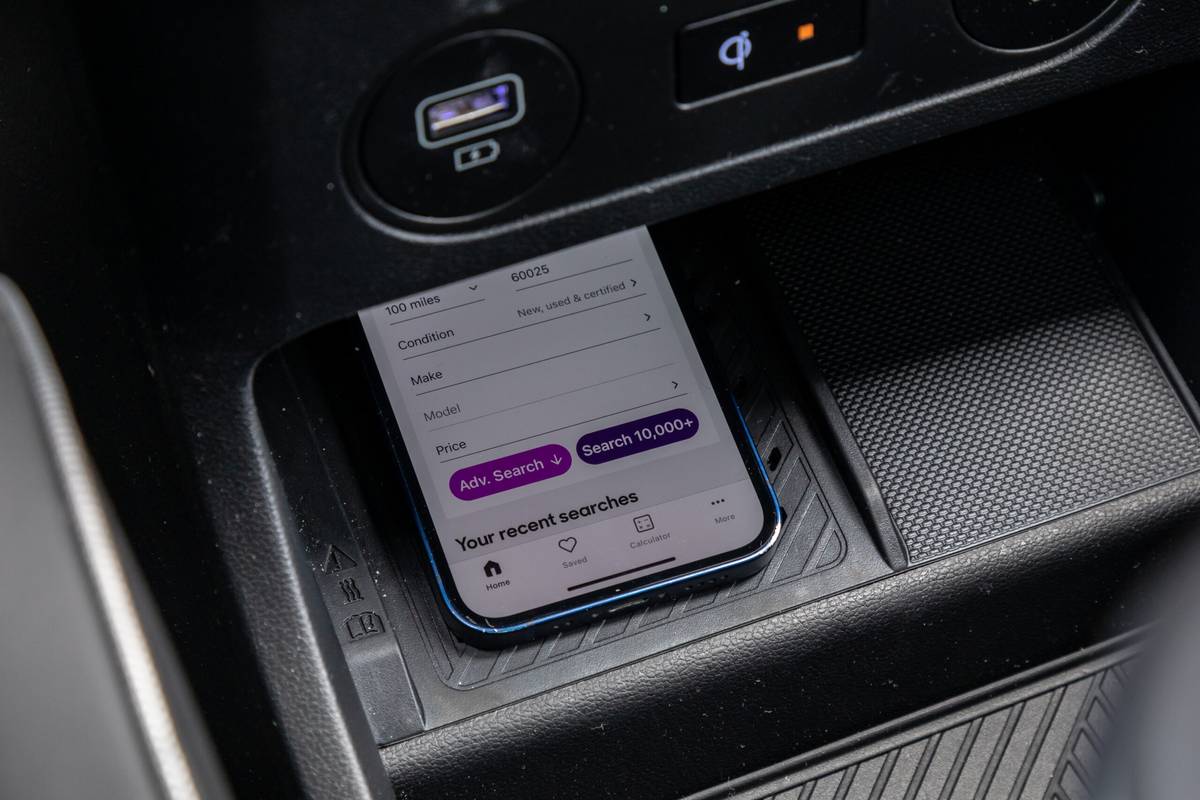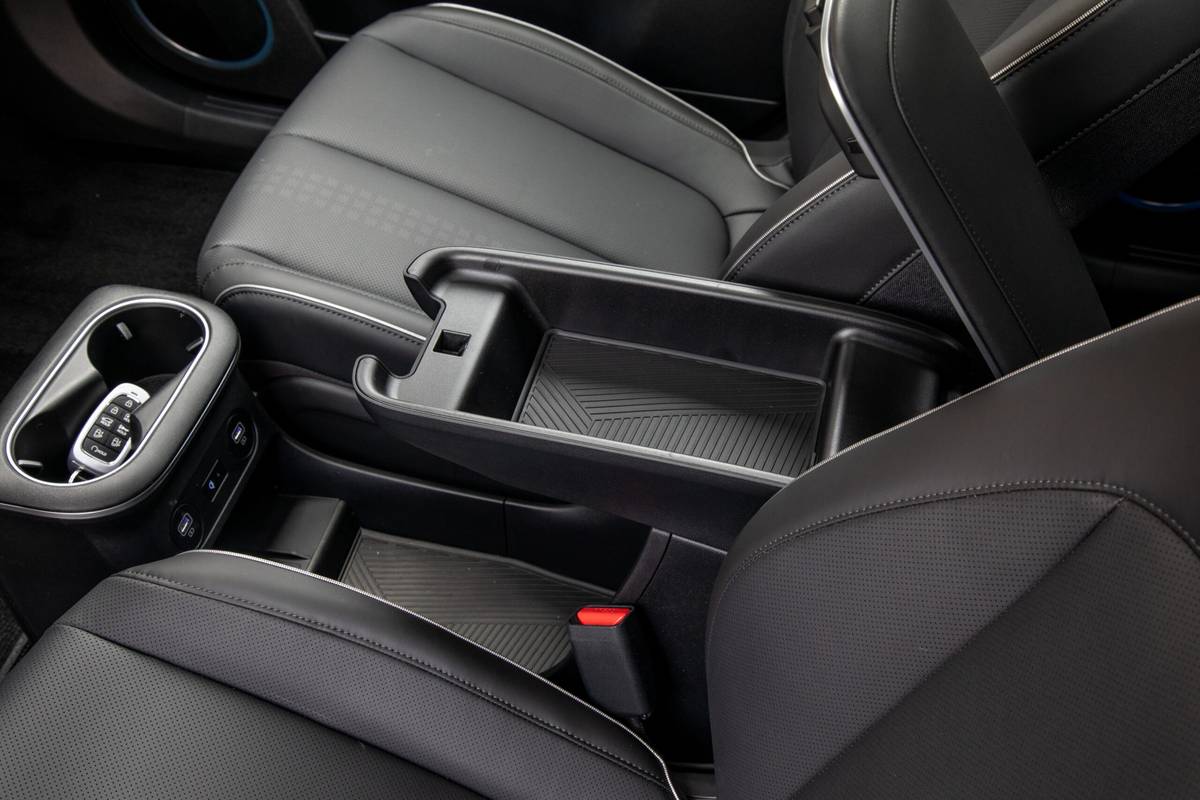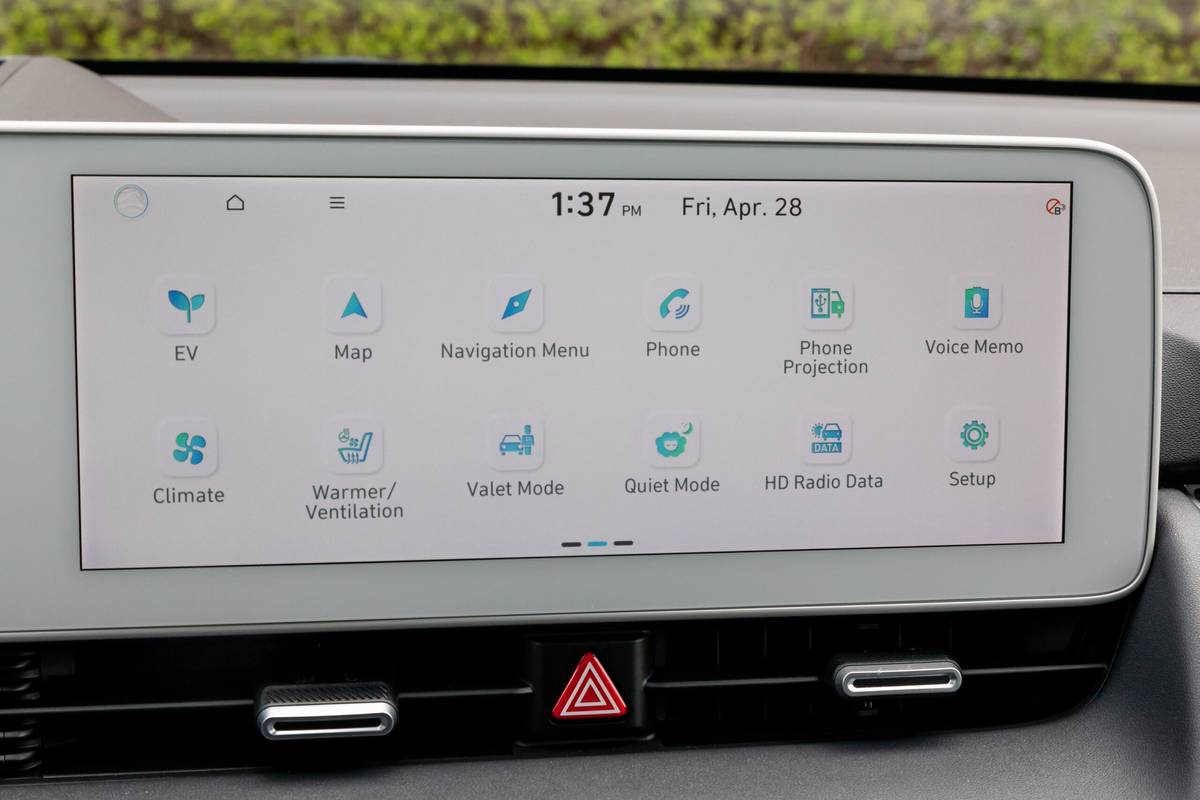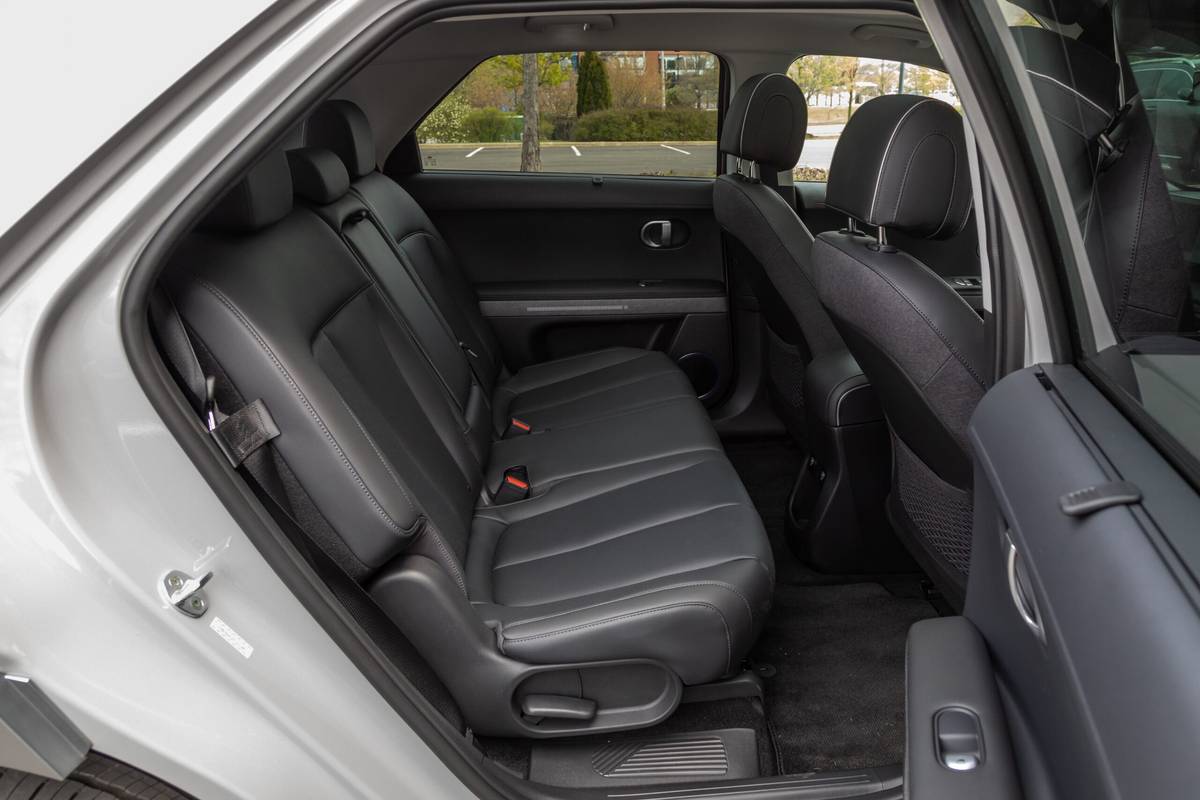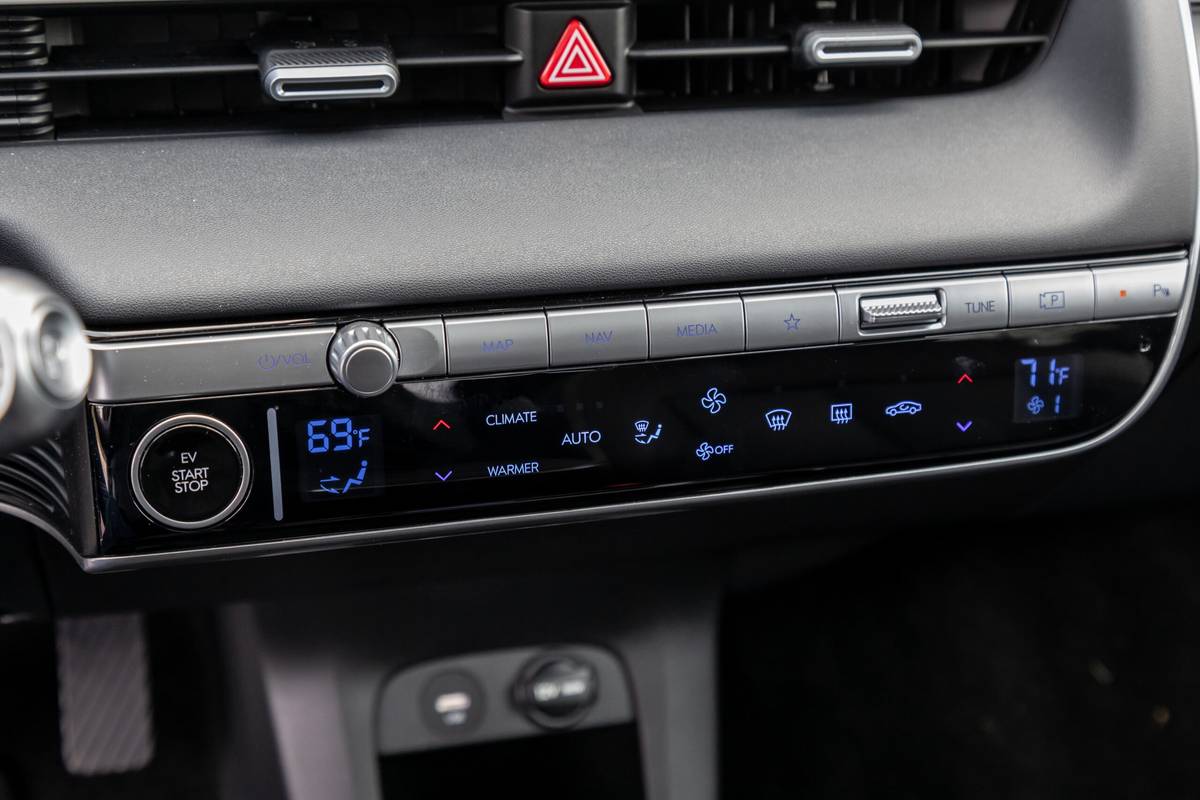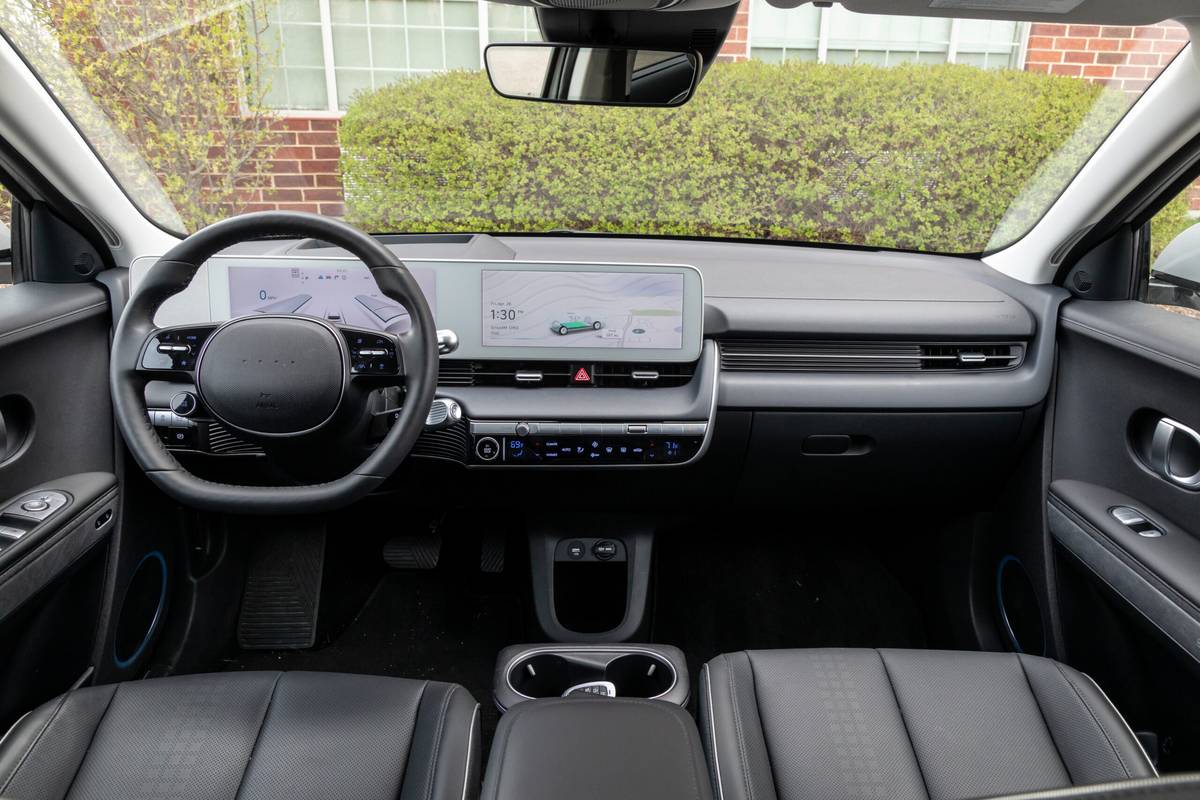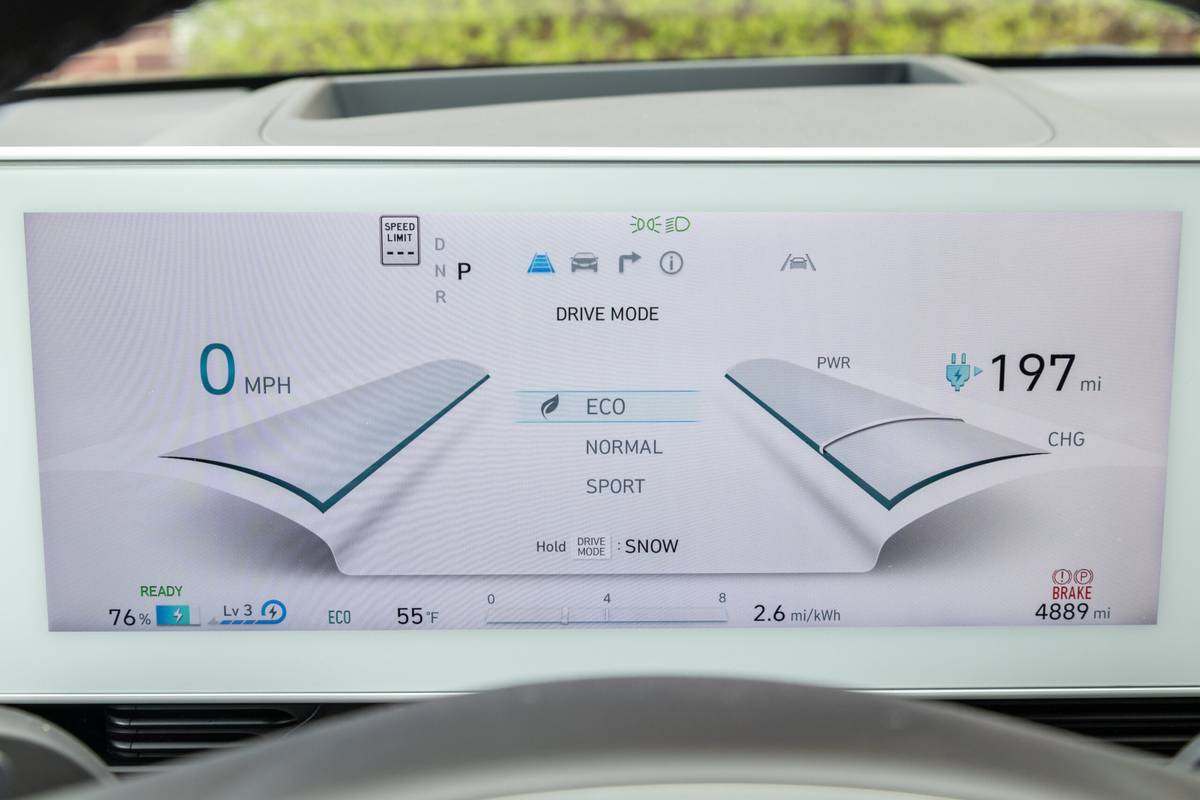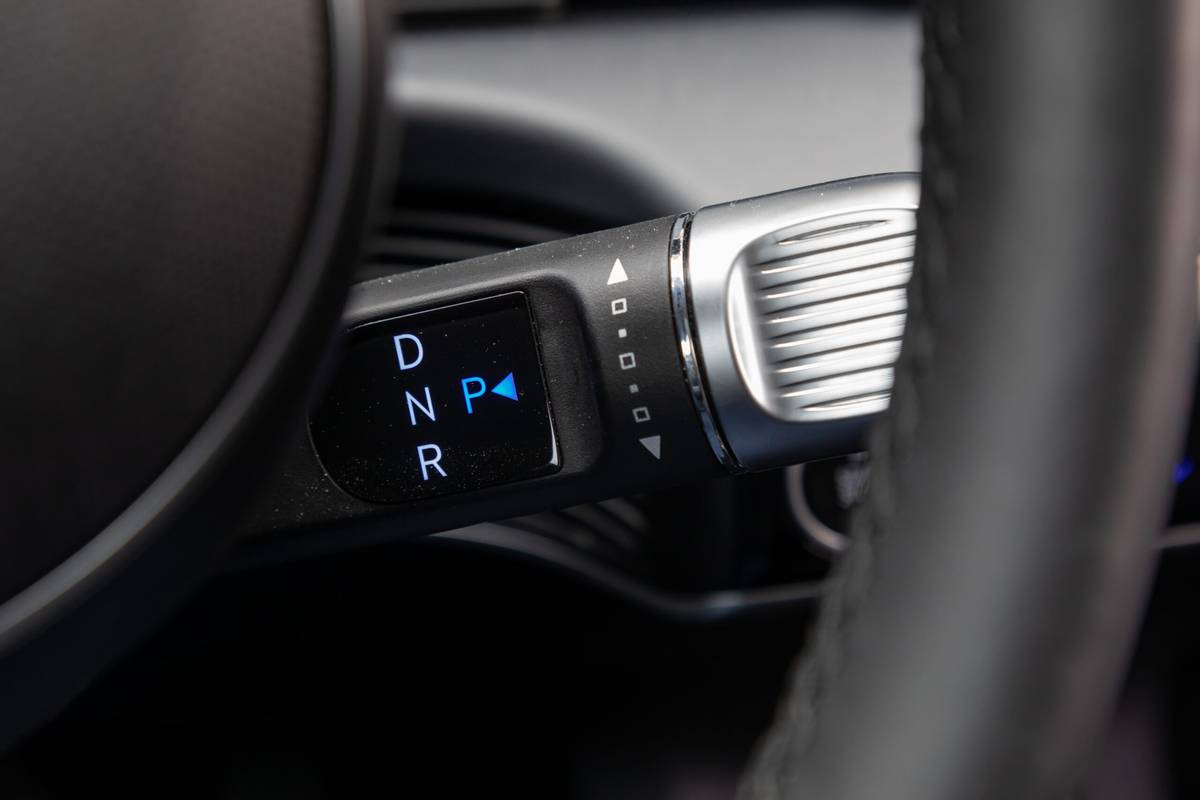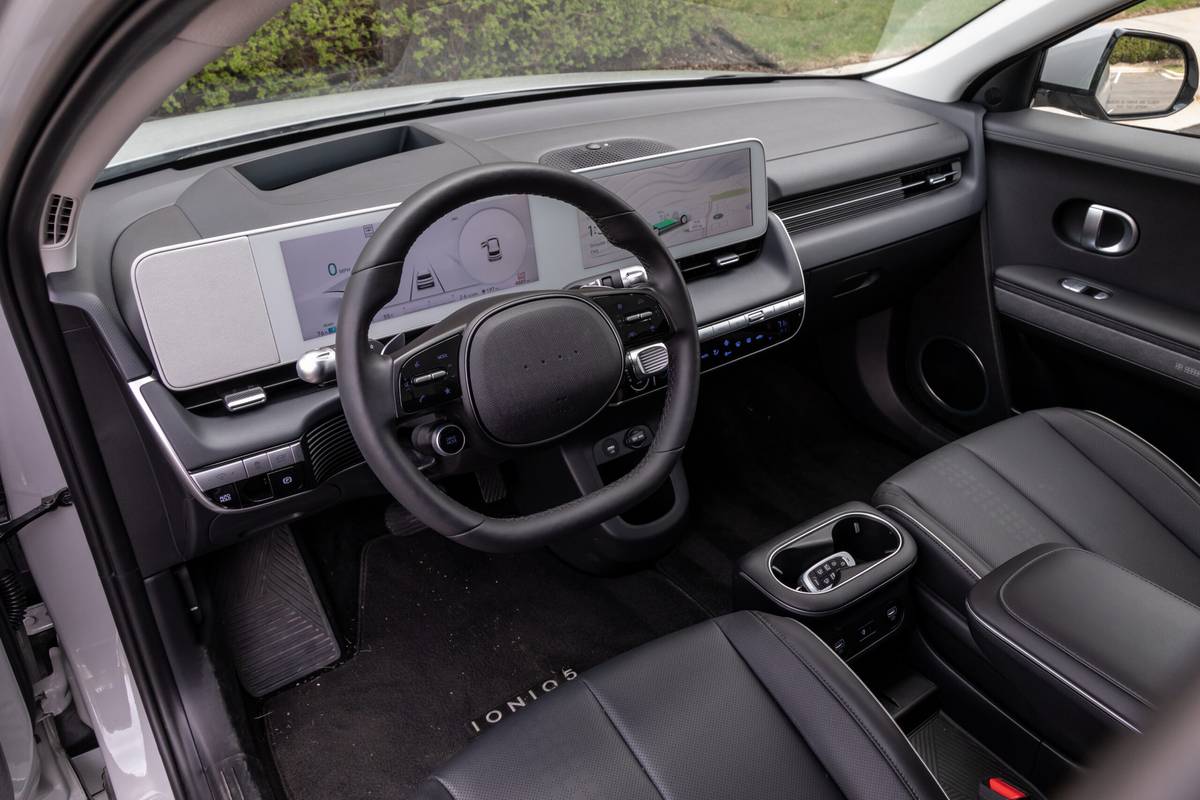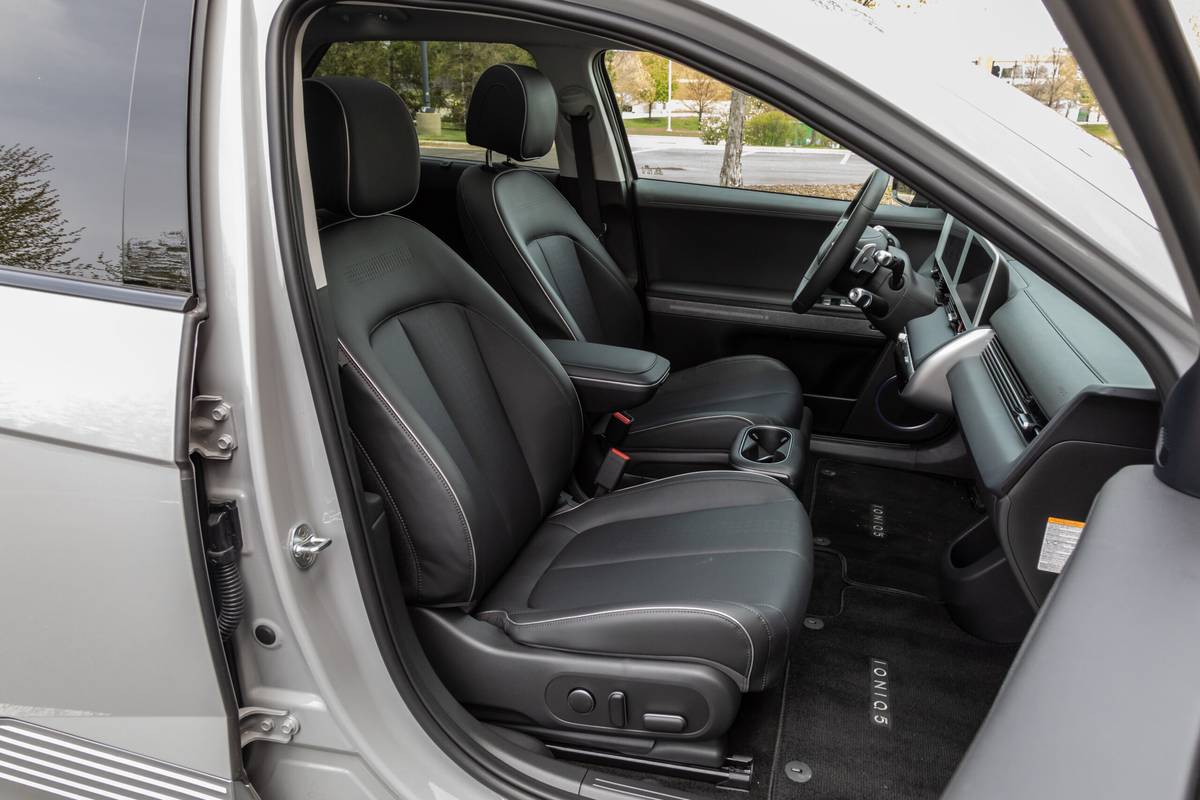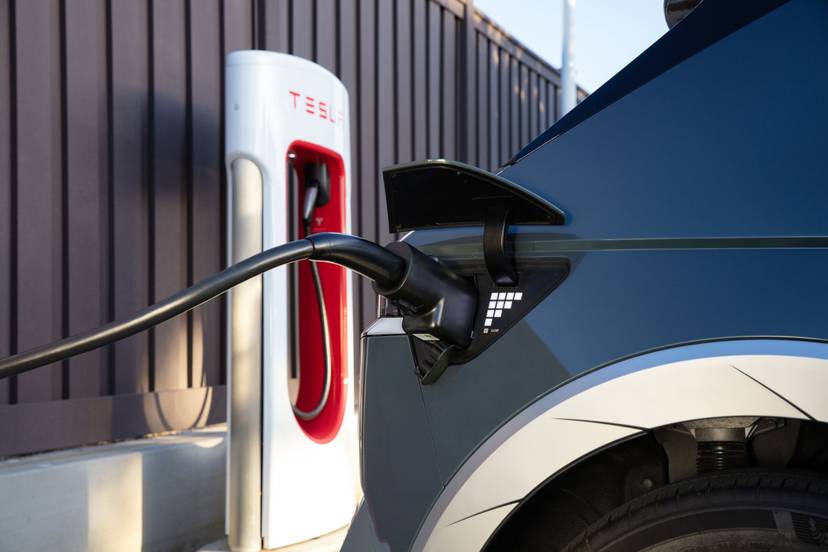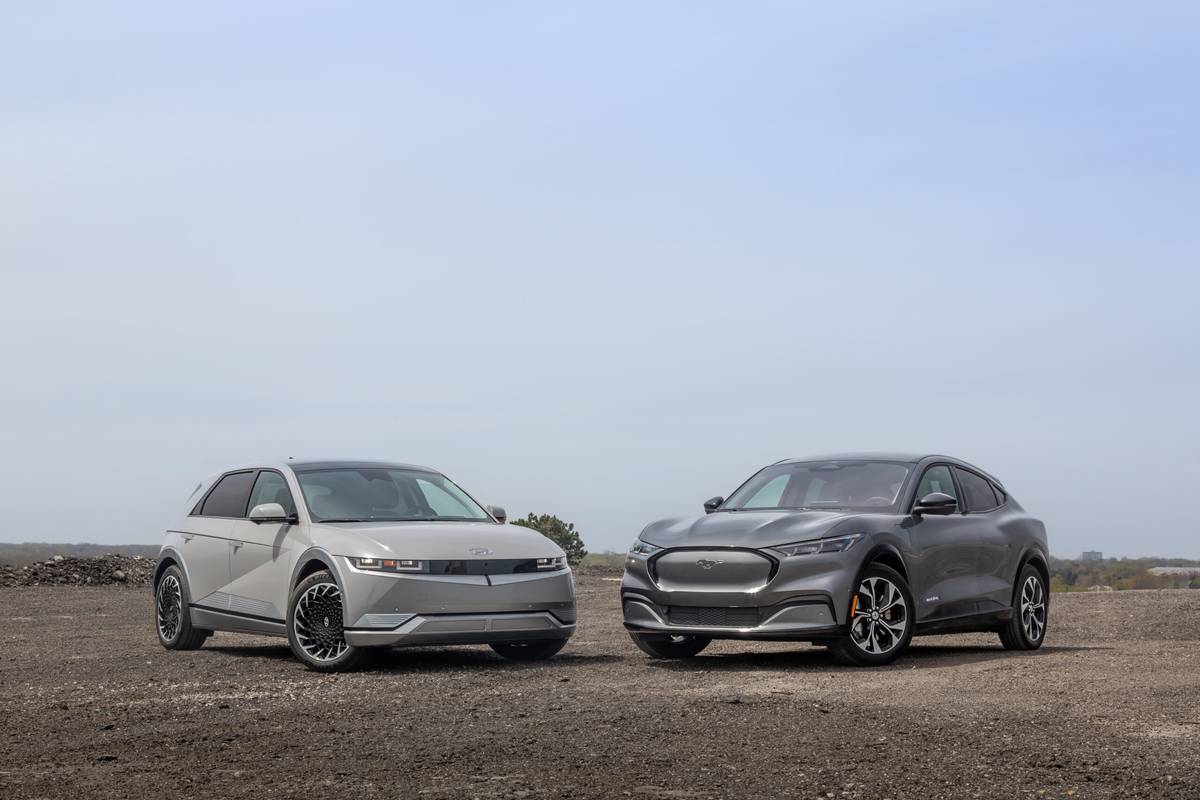
We’re fans of the Hyundai Ioniq 5, naming it our Best Electric Vehicle of 2023, but that doesn’t mean it’s perfect (we haven’t found one yet, but we’ll let you know when we do), and it’s just one of a number of all-electric SUVs you can buy. We use the term SUV loosely here; many of these EVs could be mistaken for mid-size hatchbacks, but since Americans are largely allergic to hatchbacks, SUVs they are.
Related: Hyundai Ioniq 5 Vs. Tesla Model Y: Functional Vs. Funky
The Ford Mustang Mach-E is another one of these hatchback-like SUVs, and it’s also a Cars.com award winner; it took home 2021 Best Eco-Friendly Car honors in its debut year. The Mustang Mach-E gets some updates for 2023, including the latest version of Ford’s BlueCruise hands-free driving system, which can now perform lane changes.
We recently tested both of these EVs in Chicago and its suburbs, driving them back to back and testing both Level 2 home charging and DC fast-charging performance. The testing revealed key differences between the two EVs, as well as who they might be best suited for. You can see what we liked (and disliked) about each below, or check out the related video where we discuss both EVs at length.
Related Video:
We cannot generate a video preview.
2023 Ford Mustang Mach-E Premium AWD
The verdict: If you’re looking for a sportier EV, live somewhere with smooth roads or spend a lot of time driving on the highway, the Ford Mustang Mach-E’s handling attributes and hands-free driving system will be appealing, but beware its extremely firm ride.
- As-tested price: $58,795 (including destination, but not counting federal tax credit of up to $3,750)
- EPA-rated combined efficiency: 92 mpg-equivalent
- EPA-rated range: 290 miles
- Miles of range added in 1 hour on 48-amp Level 2 home charger: 30
- Miles of range per minute at DC fast charger: 4.7
The Good
Handling: It’s fun to toss the Mustang Mach-E into a corner — the SUV stays flat, composed and doesn’t complain — but its steering doesn’t offer any road feel, which limits overall driver engagement. The car will tolerate your antics, but it doesn’t urge you to push it even harder.
Hands-free driving system: Ford’s BlueCruise is a confidence-inspiring system that doesn’t make decisions that leave the driver second-guessing it, though it is better suited to stretches of open highway rather than the busy, sometimes hectic interstates near urban centers. The new lane-changing feature controlled by the turn signal stalk is a helpful addition.
Interior quality: The Mustang Mach-E’s interior features solid build quality and materials that look and feel nice (aside from the faux carbon fiber on the dashboard, which is cheap-looking). Door panel materials and other soft-touch trim in the front of the cabin carry through to the rear seating area, which doesn’t see a drop-off in quality. Overall, the cabin feels just a bit nicer than the Ioniq 5’s.
Touchscreen functionality: While climate controls that appear on a touchscreen still aren’t our first choice, Ford does it better than most on the Mustang Mach-E’s vertically oriented 15.5-inch touchscreen; the controls persist at the bottom of the screen regardless of what’s appearing in the top two-thirds. The touchscreen’s menus for audio and navigation are straightforward, too, though it’d be nice to have a direct tune feature for satellite radio as there is for FM radio. AM radio, alas, is absent.
Connectivity: The Sync 4A infotainment system includes wireless Apple CarPlay and Android Auto connectivity, and there are USB-A and USB-C ports if you prefer a wired connection. Wireless CarPlay is easy to set up, and CarPlay uses the majority of the touchscreen’s real estate above the climate controls.
Front trunk: Unlike the Ioniq 5’s front storage bin that’s so small, it’s of questionable value, the Mustang Mach-E has a proper front trunk that enhances utility; the frunk adds another 2 cubic feet of cargo space, according to Cars.com’s cargo measurements, and it also includes a drain.
Rear window wiper: A rear window wiper might not seem like an important feature — and a number of electric SUVs, including the Ioniq 5, don’t have one — but it’s one of those things you don’t miss until you need it, and you’ll be glad you have it whenever it’s raining.
The Bad
Ride quality: Ride quality is the Mustang Mach-E’s Achilles’ heel. It’s too firm for what it needs to be; at one point, a backseat passenger of ours was on the brink of getting out because the ride was so uncomfortable on Chicago’s less-than-perfect blacktop. If you live anywhere potholes and rutted roads are more common than not, you should think twice before purchasing one of these.
Visibility: The driver’s over-left-shoulder view is restricted by the Ford’s B-pillar, and over-right-shoulder visibility is hampered by the SUV’s shorter side windows. Electronic visibility aids include blind spot warning indicators in the side mirrors and a 360-degree camera system, both of which are helpful but not substitutes for natural visibility.
Backseat accommodations: The backseat is reasonably comfortable — taller passengers sit with their knees elevated, but there’s good foot space underneath the front seats, as well as enough headroom with the glass roof — but the side windows are on the shorter side, which restricts visibility. The Ioniq 5’s interior feels airier, and its backseat slides and reclines (the Mustang Mach-E’s does neither).
DC fast charging: It took 32 minutes to DC fast-charge the Mustang Mach-E’s extended-range battery from 26% to 80%, adding 149 miles of range. Our calculated average charging rate was 97.5 kilowatts — a bit below the extended-range variant’s maximum of 150 kW. The Ioniq 5, by comparison, charged from roughly the same level in almost half the time (18 minutes) on the 350-kW DC fast charger we used for our test.
Rear cargo area: While the Mustang Mach-E’s usable front trunk is a benefit, it has less cargo space behind its backseat than the Ioniq 5, according to our measurements. The cargo area measures 15.9 cubic feet to the Ioniq 5’s 19.1 cubic feet, and the Mach-E’s frunk can’t make up the difference.
No sunshade: The Premium trim level’s panoramic glass roof makes the interior of the Mach-E feel more open, but it’d be nice to have a sunshade for times you’d rather keep the sun out.
Research the 2023 Ford Mustang Mach-E | Search Inventory | Car Seat Check
2023 Hyundai Ioniq 5 Limited AWD
The verdict: Many practical attributes like a reasonably comfortable ride, good interior space and quick DC fast charging make the Hyundai Ioniq 5 a sensible choice for families and anyone who plans on road-tripping with their EV.
- As-tested price: $58,045 (with destination)
- EPA-rated combined efficiency: 101 mpg-e
- EPA-rated range: 266 miles
- Miles of range added in 1 hour on 48-amp Level 2 home charger: 31
- Miles of range per minute at DC fast charger: 7.2
The Good
Acceleration: The Ioniq 5 responds quicker when you press the accelerator pedal, and it feels slightly swifter overall. The 0-60 mph times we observed at the drag strip when testing prior model years of the Mustang Mach-E and Ioniq 5 bear this out, with the Hyundai coming in 0.7 second quicker with a time of 4.7 seconds.
Ride quality: The Ioniq 5’s ride quality is better than the Mustang Mach-E’s; even though the Hyundai still rides firmly, it’s not as brittle or harsh over bumps. There’s better isolation from impacts overall, and that results in greater ride comfort. The Hyundai is a better choice if you live somewhere that doesn’t have perfectly smooth roads.
DC fast charging: The Ioniq 5’s higher 235-kW maximum charging rate has real benefits when charging at the right type of DC fast charger. A 350-kW EVgo charger brought the Ioniq 5’s battery from 28% to 80% in 18 minutes, or a little more than half the time it took the Mach-E to charge (32 minutes) from roughly the same starting point. The charge session added 130 miles of range, or 7.2 miles of range per minute.
Roomy interior: The front of the cabin is airy, the seats are comfortable, and the space between the driver and front passenger is relatively open. The Ioniq 5’s backseat also offers adjustability that the Mustang Mach-E doesn’t, with a sliding and reclining seat that has good space for adult passengers.
Visibility: The Ioniq 5’s overall visibility is better than the Mach-E’s thanks to a shorter hood that drops away from the driver’s view, a more upright shape with taller side windows and roof pillars that aren’t as prone to blocking your view. The Hyundai also has a number of blind spot warning indicators — icons in the side mirrors along with camera views and warnings in the digital instrument panel.
The Bad
Handling: The Ioniq 5’s more comfort-oriented suspension tuning means it doesn’t handle as well as the Mustang Mach-E; there’s more body roll in corners versus the Ford’s flatter cornering.
Touch-sensitive climate controls: The Mach-E’s climate controls are on its large center touchscreen, but the Ioniq 5 has a separate touch panel below its own dashboard screen. We’re not fans of touch-sensitive controls that aren’t part of a screen, and Ioniq 5 drivers would have been better served with actual buttons or knobs for these controls.
Wireless connectivity: The Ioniq 5’s standard 12.3-inch touchscreen multimedia system includes Apple CarPlay and Android Auto, but it doesn’t support wireless connectivity for these systems. This might seem like a nitpick, but the convenience of wireless CarPlay and Android Auto is real, and you miss it in cars that don’t have it.
No hands-free driving system: The Ioniq 5 comes with different versions of Hyundai’s Highway Driving Assist system, depending on the trim level, and while the system can help manage speed and steering on the highway, it’s not a hands-free system like BlueCruise. The Limited trim’s Highway Driving Assist II system also includes lane change assist, but in our testing, it responded too tentatively to be of much use on busy urban interstates.
No rear window wiper: It’s odd Hyundai decided to skip a rear wiper blade for the Ioniq 5; you’ll find the common (and useful) feature on other Hyundai SUVs, including the inexpensive Venue.
Research the 2023 Hyundai Ioniq 5 | Search Inventory | Car Seat Check
More From Cars.com:
- 2023 Ford Mustang Mach-E: Orders Reopen With Lower Prices, Increased Range
- Ford Mustang Mach-E Premium Vs. GT Performance Edition: Is the GT Worth the Extra Money?
- 2023 Hyundai Ioniq 5 Gets More Range, Equipment, $1,500 Price Increase
- 2022 Hyundai Ioniq 5 Named IIHS Top Safety Pick Plus
- Shop Electric Vehicles
Cars.com’s Editorial department is your source for automotive news and reviews. In line with Cars.com’s long-standing ethics policy, editors and reviewers don’t accept gifts or free trips from automakers. The Editorial department is independent of Cars.com’s advertising, sales and sponsored content departments.





























